Primordial Illuminations
Primordial Illuminations Artist Statement - Tarra Bandet
The genesis of art is one of the earliest virtues of human intelligence, spirituality, and history by perpetually connecting us throughout time to our primary origins and evolutionary purpose as human beings. Thousands of years ago this primordial relationship with art began with the natural environment which created us, into which we were born, which sustained us, adorned us and ultimately taught us about a mystical energy and power in the universe greater than ourselves.
The inception of “Primordial Illuminations” seeks to reconnect us to the vast scope of our relationship with nature by recognizing that this primary origin is permanently united to the human condition, evolution, imagination and the foundation for learning in the arts and sciences. The Richard J. Massey Foundation for Arts and Sciences recognized the vital relationship between art and science by awarding a commission to represent the foundation, and which became the focal point for this art exhibition. Due to the complexity of the commission, a description based on this one, “Magnum Opus” art piece is featured in a separate statement.
Despite nature’s infinite lineage in all cultures since human existence, the highly complex topic of nature in art has ironically been often marginalized as commercial “landscape” and frequently dismissed in contemporary art circles. The exquisite language of the timeless but revolutionary landscapes that we once marveled at in paintings by Turner and Monet seem to be now merely a credible topic isolated to the past.
Mythological and religious symbols derived or imagined from nature became a common root of all narratives in all cultures in the world. Why is this rich topic, spanning evolution over billions of years, the source of energy, food, shelter, early medicine, science, and human history not just as valid today as it was a thousand years ago?
Since the beginning of human history, all cultures have honored and respected nature, recognizing its mystical power and celebrating the bounty of our natural environment sustaining our existence. However, over the last two centuries, ignorant abuse of nature has blinded and threatened to paralyze us in our own evolution. Destruction to the delicate ecosystems and balance of mother earth will ultimately sabotage our basic ability to advance as a species and even survive. Despite this reality, a new emerging generation is seeking to protect and to once again illuminate our most sacred energy resource, nature.
The indigenous human desire and need to evolve and communicate with each other and our environment is taking us closer to the intelligence of the expanding Universe through our constant search for globalization and harnessing precious resources for natural energy.
Beyond our basic needs on planet earth is the search for untapped energy, other galaxies and other life forms, but must we not first protect our own sacred Garden of Eden?
“A human being is a part of the whole called by us universe, a part limited in time and space. He experiences himself, his thoughts and feelings as something separated from the rest, a kind of optical delusion of his consciousness. This delusion is a kind of prison for us, restricting us to our personal desires and to affection for a few persons near us. Our task must be to free ourselves from this prison by widening our circle of compassion to embrace all living creatures and the whole of nature in its beauty.” - Albert Einstein
2012-2015 ART COMMISSION SUMMARY MAGNUM OPUSPrimordial Illuminations of Arts and Science
Created by Visual Artist Tarra Bandet
This extensive 3-year commission project is an elaborate art piece created by visual artist Tarra Bandet that symbolically represents The Richard J. Massey Foundation for Arts and Sciences, New York. Please see additional information below for a more detailed description on this extraordinary artwork featuring approximately ONE MILLION pieces of glass, shells and other mixed media materials.
Visual Artist Tarra Bandet spent over 3 years working on the entire conceptual project, conducting research about the relationships between art and science, world history and art history, securing the final design and creating the final art work. Thousands of hours were spent formulating mixed media structures, hand cutting and placing glass, collecting symbolic objects and working them into sculptural and mixed media relief forms and painting.
The following categories are represented in Tarra's Art Commission:
Magnum Opus: Primordial Illuminations of Arts and Science
Harmonious Design Elements for the Arts and Sciences
Visual Artist Tarra Bandet included some of the most powerful symbols in nature and science to be represented in the commission art piece such as the symbols of primordial life, international symbols of nature in art and culture, the introduction of logical thought and complex history of numbers such as the Fibonacci mathematical sequence. The "Golden Ratio/Golden Measurements" are directly applied throughout the actual measurements in the entire composition of the commission. The Periodic Table and its various "elements" are presented in solid form. Gold (24-carat) and copper adorn and illuminate the entire composition.
Ancient symbols gathered from the Zodiac and Birthstones are combined with Leonardo da Vinci, Galileo and the emerging sciences during the Renaissance. This includes the Vitruvian Man and findings on Astronomy and the Constellations. Newton’s Law, Darwin’s Scientific Theories about Evolution, and Einstein’s Theory concerning energy and “Time and Space” are symbolic theories hidden inside the composition.
Complex Symbolism in Nature, Math, Science and Art.
The Golden Ratio
The Golden Ratio 1.619 is found in many sources in nature such as flower petals, seed heads, pinecones, fruits and vegetables (pineapples, cauliflower), shells, tree branches, faces, spiral galaxies, DNA molecules, and animal bodies.
The Golden Ratio has also been identified in many ancient structures, in particular, the Greek Parthenon, Acropolis, Athens and several cathedrals throughout Europe.
The Vitruvian Man:
Designed by Leonardo da Vinci
This universally recognized symbol connecting "Art, Math, Science and the Proportions of Man" created by Leonardo da Vinci is a symbol of Renaissance free thinking. Tarra recreated this exact symbol and introduced another layer of symbolism by introducing the human form merging into the energy of the sun. Therefore, it represents the human evolutionary path towards unity with the "Living Universe" and our ability to transcend a physical form, gravity, and "Time and Space."
Furthermore, the Vitruvian figure also represents illumination of spirit, knowledge, and power, which are symbolically reinforced in history by referring to the ancient Sun gods such as the Ancient Egyptian Sun god “Ra” or ancient Greek Sun god “Apollo."
THE FOUR ELEMENTS OF NATURE:
Earth, Water, Fire and Wind/Sky
Fire: is represented by the symbol of the sun
Water: is represented by the ocean
Earth: The complex layering of ground and gems in the soil represents the intricate foundation of the earth
Wind/Sky: is implied by the movement in the waves and clouds in the sky
DNA AND THE DOUBLE HELIX STRUCTURE:
The structural form of the DNA helix fits into the implied pillars of the composition, holding up the framework of the composition and symbolically linking the 4 Elements of Nature (Earth, Water, Fire and Wind) and the Elements of the Periodic Table.
PERIODIC TABLE:
Hidden in the root system of the trees are all the elements of the Periodic Table. Each symbol is hand written on stone in gold lettering. Direct references to the Periodic Table are symbolically included through the entire composition. Some examples are gold, copper, pyrite, and other semi-precious metals.
ASTRONOMY:
In the night sky the constellations are pieced together in 24 carat gold and surrounded by thousands of pieces of hand cut glass in various blues and other colors creating a dynamic ensemble.
BIRTHSTONES AND THE ASTROLOGICAL ZODIAC:
In the Magnum Opus Composition, the 12 Birthstones and the Zodiac are represented in the sun structure encircling the Vitruvian Man. The symbolic Sun Clock addresses the theories of Einstein and transcendence of Time and Space.
Starting at the top or North and moving Clockwise in a circle, each birthstone is represented as actual gems in their raw, unpolished version:
BIRTH MONTH SIGN BIRTHSTONE
AUGUST LEO PERIDOT
SEPTEMBER VIRGO SAPPHIRE
OCTOBER LIBRA OPAL
NOVEMBER SCORPIO TOPAZ
DECEMBER SAGITTARIUS TURQUOISE
JANUARY CAPRICORN GARNET
FEBRUARY AQUARIUS AMETHYST
MARCH PISCES AQUAMARINE
APRIL ARIES DIAMOND
MAY TAURUS EMERALD
JUNE GEMINI PEARL
JULY CANCER RUBY
SYMBOLIC PLANT LIFE OF TREES & FLOWERS
The Role of symbolic plant forms and Connecting Cultures in the World
The Large TREES that are featured in the 3 panels between the DNA double helix represent ancient cultures and civilizations. They are as follows:
OLIVE TREE:
The Olive Tree is one of the most revered trees in ancient culture, tying together the histories of Ancient Egypt, Africa, Mesopotamia, East and Western Europe, the Middle East, Southern Asia, and China.
The panel with the olive tree is a symbol representing early origins of plant species. Among them are specific flowers, which have existed for thousands of years.
FLOWERS represented with the Olive Tree:
ORCHID:
Orchids have existed as a species for millions of years. There are over 25,000 documented species.
According to livescience.com
“Even dates some species of orchid to around 120 million years ago, before the continents split into their current form.”
Indigenous throughout the continents
IRIS:
The Iris received its name from the Greek Goddess of the Rainbow, Iris.
Symbol of faith, wisdom, and cherished friendship
Symbol of good news and good luck
Symbol of the French Monarchy and Florence, Italy
In the form of the Fleur-de-lis
Symbol of 25th wedding anniversary
MAGNOLIA:
An ancient Flower thought to be a species 100 million years old.
Symbol of nature itself, purity, perfection, wisdom, youth and innocence.
Symbol of good fortune and good luck
In the United States, it is a symbol of feminine beauty and strength
In Chinese Art, feminine sweetness and beauty, purity and nobility
APPLE TREE:
The Apple Tree is as ancient as some of the earliest written recordings. The apple tree appeared in the earliest Bible source, the Old Testament. The Apple Tree was considered a symbol of knowledge and was part of the story about human origin and the banishment from paradise.
The scientist Newton used the symbol of the apple falling from the tress to describe the “Law of Gravity."
Apple pie is considered one of the most cherished foods in American culture representing what is wholesome, delicious, and fondness of home.
The “BIG APPLE” is linked with New York City
APPLE Computer is considered one of the most important innovations in computer technology, devices, knowledge and communication systems.
FLOWERS represented with the Apple Tree:
ROSE:
Symbol of beauty, love, friendship and other attributions of recognition to specific people in history..
Certain roses represent people, places and climates on ALL 7 continents.
Symbol of Scientific study and Hybrid cultivation
CHERRY BLOSSOM TREE:
Cherry Blossom trees connect Asian, eastern and western cultures through a myriad of examples. In particular, India, China and Japan all have used the symbol of the cherry blossom in ancient narratives, artwork and adornment.
Japan has revered Cherry Blossoms for hundreds of years and gave Washington DC thousands of Cherry Trees as a symbol of peace, restoration and rebirth.
In American history, a legend concerning the first President of the United States, George Washington “could not tell a lie” and admitted to his father he chopped down his favorite Cherry Tree. Cherry Trees have been planted extensively in the north and south because of their beauty, ability to bear fruit and symbol of
According to many Native American cultures, the Cherry Tree is highly revered as a symbol of rebirth.
FLOWERS represented with the Cherry Blossom Tree:
CHERRY BLOSSOMS:
Symbol of rebirth, beauty, love, and New beginnings.
Symbol of Peace throughout the East and West.
Scientific study and Hybrid cultivation
CHRYSANTHEMUM:
Received its name from the Greek word “chrys” meaning Golden.
Symbol of optimism, joy
Symbol of life and rebirth
Cultivated by the Chinese for 2500 years
Symbol of the Emperor; as of the National Flower of Japan.
What is the “Golden Ratio?"
Description of the Golden Ratio according to livescience.com:
“The Golden ratio is a special number found by dividing a line into two parts so that the longer part divided by the smaller part is also equal to the whole length divided by the longer part. It is often symbolized using phi, after the 21st letter of the Greek alphabet. In an equation form, it looks like this:
a/b = (a+b)/a = 1.6180339887498948420 …
As with pi (the ratio of the circumference of a circle to its diameter), the digits go on and on, theoretically into infinity. Phi is usually rounded off to 1.618. This number has been discovered and rediscovered many times, which is why it has so many names — the Golden mean, the Golden section, divine proportion, etc. Historically, the number can be seen in the architecture of many ancient creations, like the Great Pyramids and the Parthenon. In the Great Pyramid of Giza, the length of each side of the base is 756 feet with a height of 481 feet. The ratio of the base to the height is roughly 1.5717, which is close to the Golden ratio. Phidias (500 B.C. - 432 B.C.) was a Greek sculptor and mathematician who is thought to have applied phi to the design of sculptures for the Parthenon. Plato (428 B.C. - 347 B.C.) considered the Golden ratio to be the most universally binding of mathematical relationships. Later, Euclid (365 B.C. - 300 B.C.) linked the Golden ratio to the construction of a pentagram.
Around 1200, mathematician Leonardo Fibonacci discovered the unique properties of the Fibonacci sequence. This sequence ties directly into the Golden ratio because if you take any two successive Fibonacci numbers, their ratio is very close to the Golden ratio. As the numbers get higher, the ratio becomes even closer to 1.618. For example, the ratio of 3 to 5 is 1.666. But the ratio of 13 to 21 is 1.625. Getting even higher, the ratio of 144 to 233 is 1.618. These numbers are all successive numbers in the Fibonacci sequence.
These numbers can be applied to the proportions of a rectangle, called the Golden rectangle. This is known as one of the most visually satisfying of all geometric forms – hence, the appearance of the Golden ratio in art. The Golden rectangle is also related to the Golden spiral, which is created by making adjacent squares of Fibonacci dimensions.
Leonardo da Vinci's 'Vitruvian Man' is said to illustrate the golden ratio.
In 1509, Luca Pacioli wrote a book that refers to the number as the "Divine Proportion," which was illustrated by Leonardo da Vinci. Da Vinci later called this sectio aurea or the Golden section. The Golden ratio was used to achieve balance and beauty in many Renaissance paintings and sculptures. Da Vinci himself used the Golden ratio to define all of the proportions in his Last Supper, including the dimensions of the table and the proportions of the walls and backgrounds. The Golden ratio also appears in da Vinci's Vitruvian Man and the Mona Lisa. Other artists who employed the Golden ratio include Michelangelo, Raphael, Rembrandt, Seurat, and Salvador Dali.
The term "phi" was coined by American mathematician Mark Barr in the 1900s. Phi has continued to appear in mathematics and physics, including the 1970s Penrose Tiles, which allowed surfaces to be tiled in five-fold symmetry. In the 1980s, phi appeared in quasi crystals, a then-newly discovered form of matter.
Phi is more than an obscure term found in mathematics and physics. It appears around us in our daily lives, even in our aesthetic views. Studies have shown that when test subjects view random faces, the ones they deem most attractive are those with solid parallels to the Golden ratio. Faces judged as the most attractive show Golden ratio proportions between the width of the face and the width of the eyes, nose, and eyebrows. The test subjects weren't mathematicians or physicists familiar with phi — they were just average people, and the Golden ratio elicited an instinctual reaction.
The Golden ratio also appears in all forms of nature and science. Some unexpected places include:
Flower petals: The number of petals on some flowers follows the Fibonacci sequence. It is believed that in the Darwinian processes, each petal is placed to allow for the best possible exposure to sunlight and other factors.
Seed heads: The seeds of a flower are often produced at the center and migrate outward to fill the space. For example, sunflowers follow this pattern.
Pinecones: The spiral pattern of the seed pods spiral upward in opposite directions. The number of steps the spirals take tend to match Fibonacci numbers.
Sunflower seeds grow in Fibonacci spirals.
Tree branches: The way tree branches form or split is an example of the Fibonacci sequence. Root systems and algae exhibit this formation pattern.
Shells: Many shells, including snail shells and nautilus shells, are perfect examples of the Golden spiral.
Spiral galaxies: The Milky Way has a number of spiral arms, each of which has a logarithmic spiral of roughly 12 degrees. The shape of the spiral is identical to the Golden spiral, and the Golden rectangle can be drawn over any spiral galaxy.
Hurricanes: Much like shells, hurricanes often display the Golden spiral.
Fingers: The length of our fingers, each section from the tip of the base to the wrist is larger than the preceding one by roughly the ratio of phi.
Animal bodies: The measurement of the human navel to the floor and the top of the head to the navel is the Golden ratio. But we are not the only examples of the Golden ratio in the animal kingdom; dolphins, starfish, sand dollars, sea urchins, ants and honeybees also exhibit the proportion.
DNA molecules: A DNA molecule measures 34 angstroms by 21 angstroms at each full cycle of the double helix spiral. In the Fibonacci series, 34 and 21 are successive numbers.”
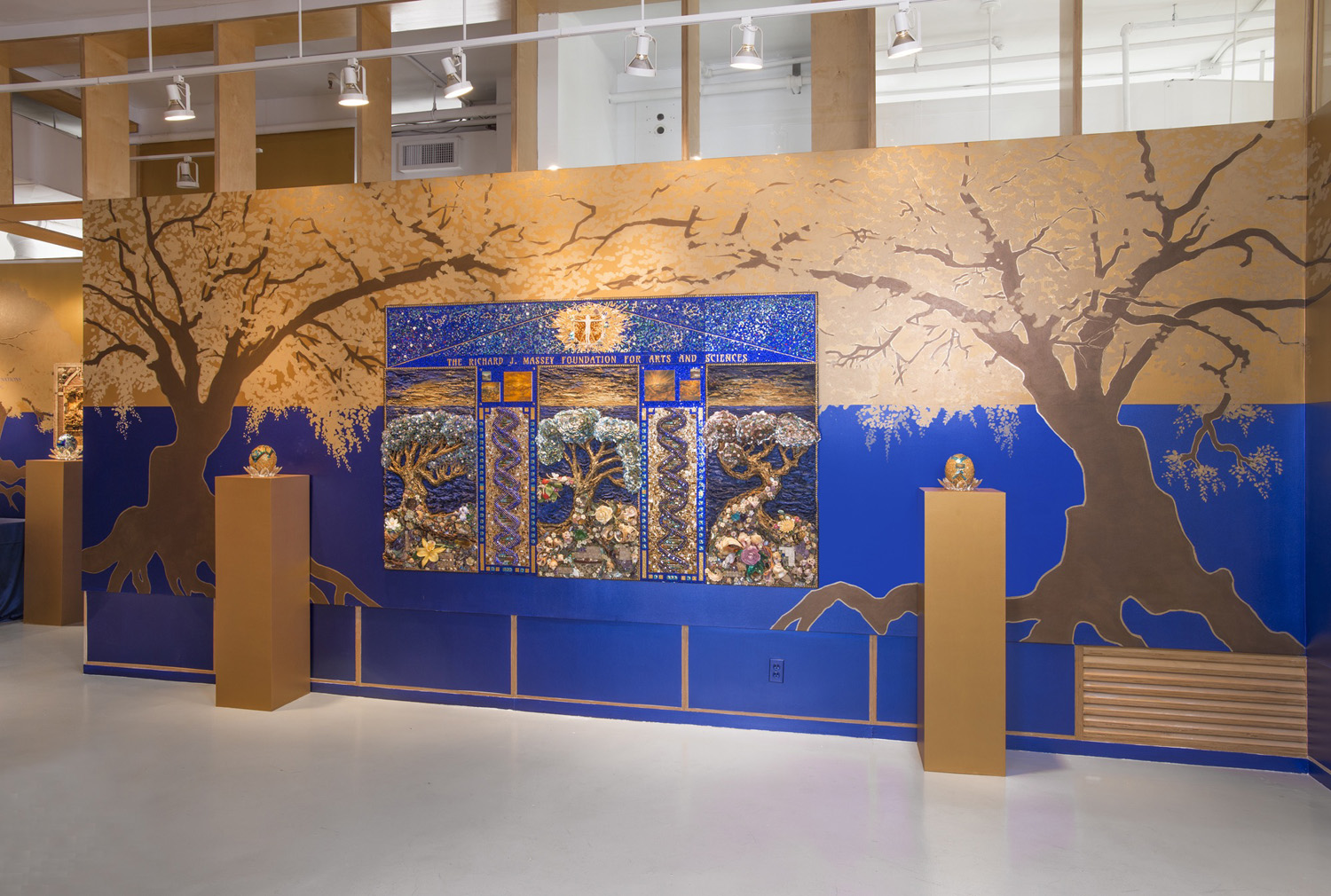
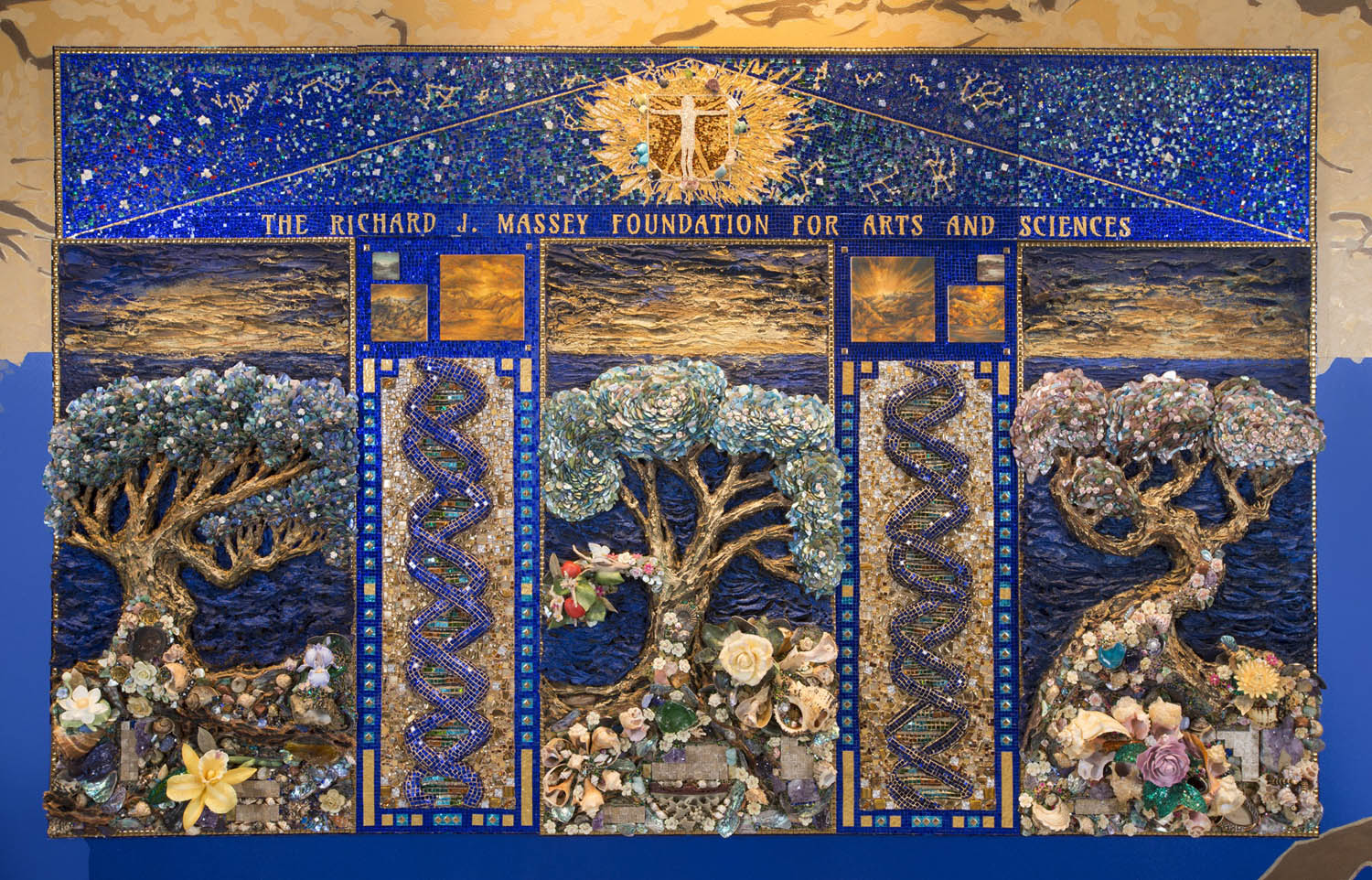
Magnum Opus
89.5" (w) x 55" (h)
Mixed Media
2015
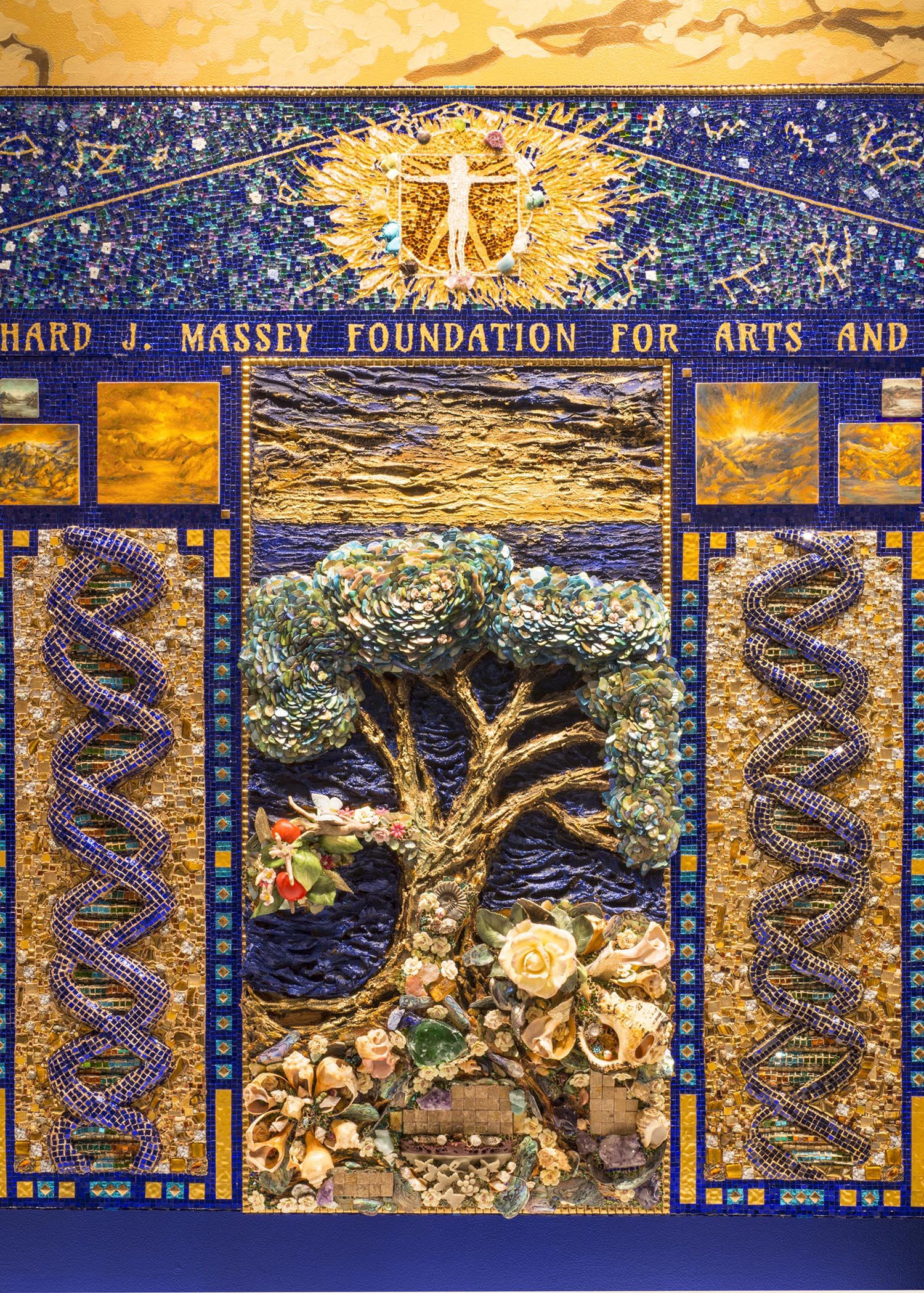
Magnum Opus (Detail)
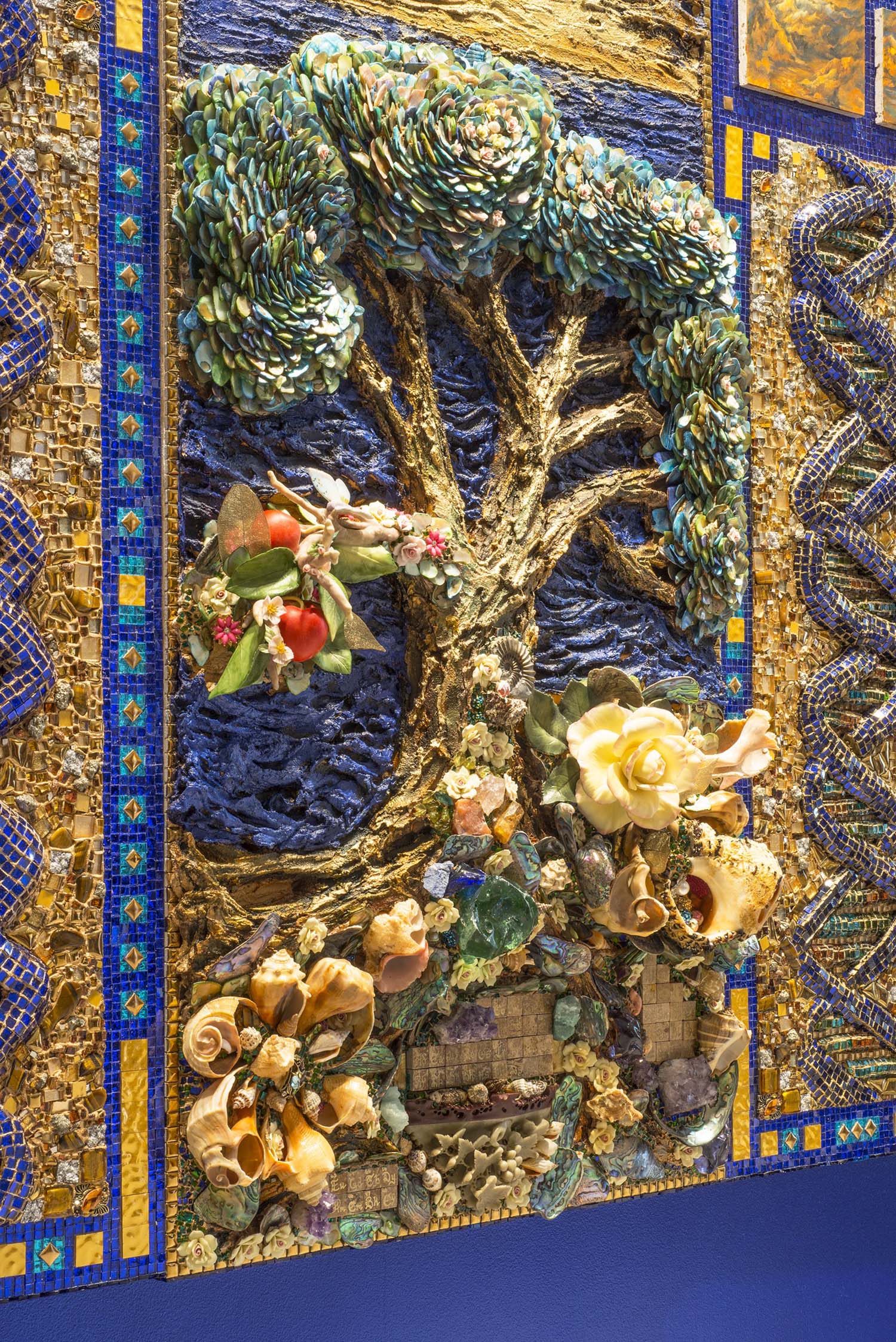
Magnum Opus (Detail)
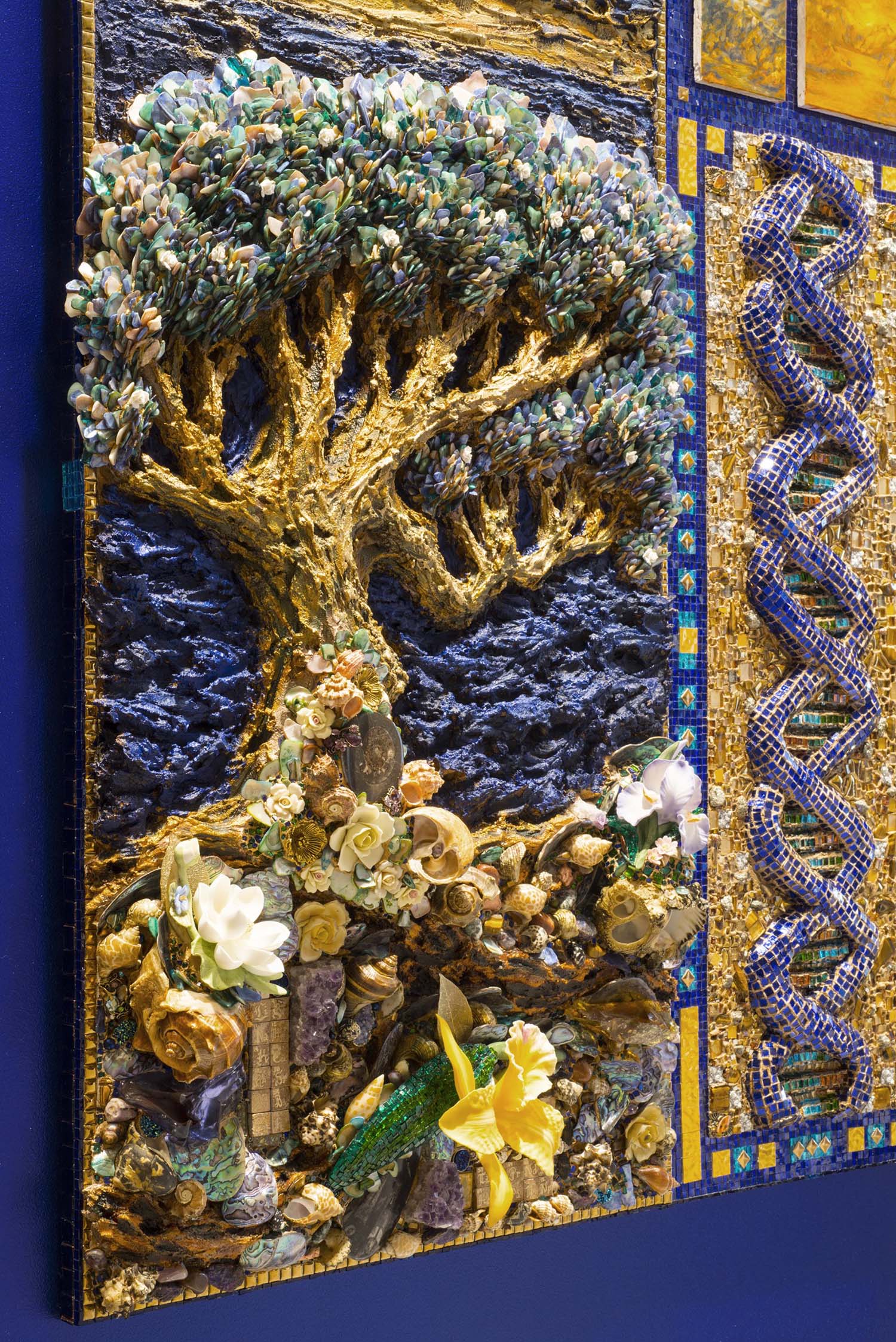
Magnum Opus (Detail)

Magnum Opus (Detail)
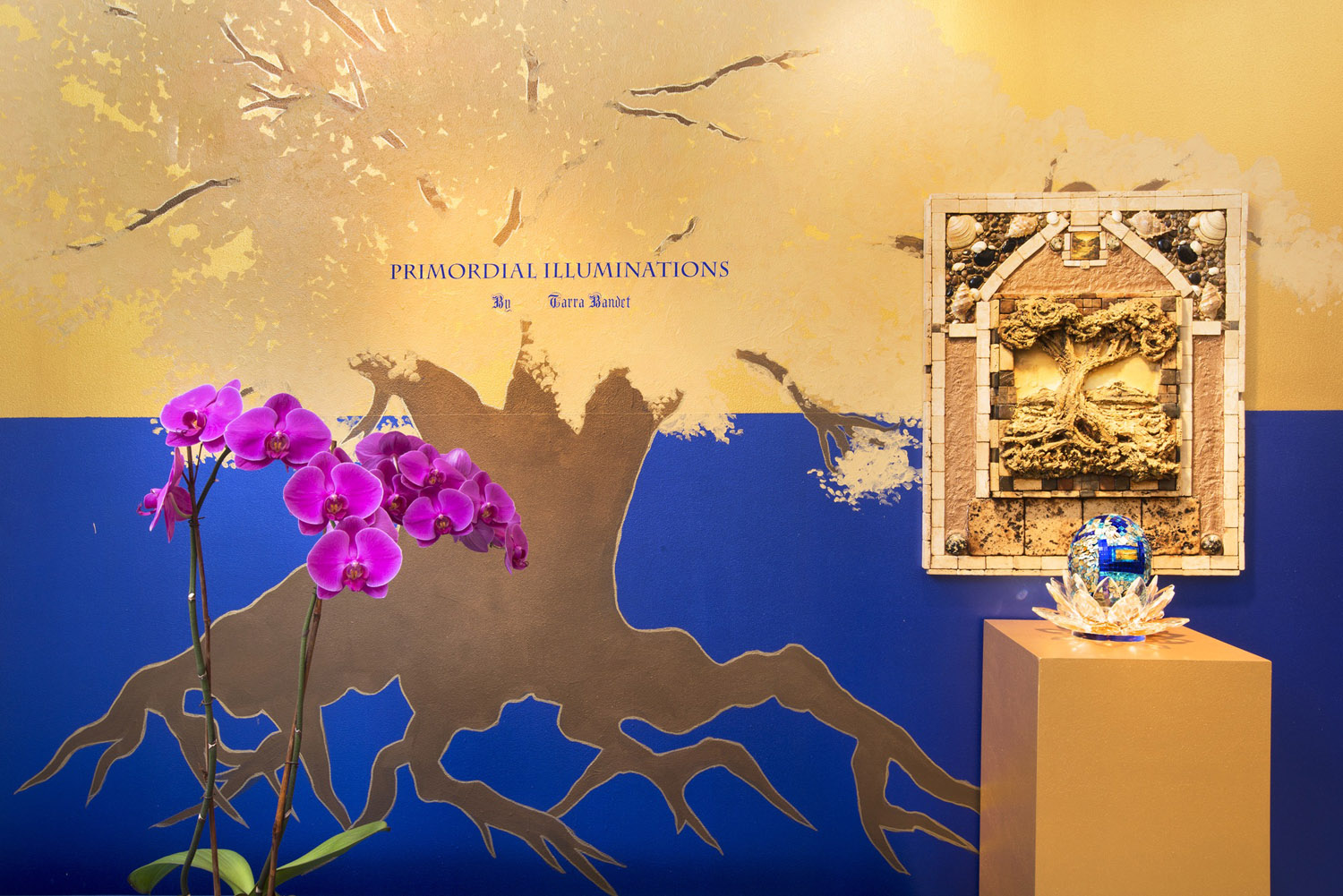
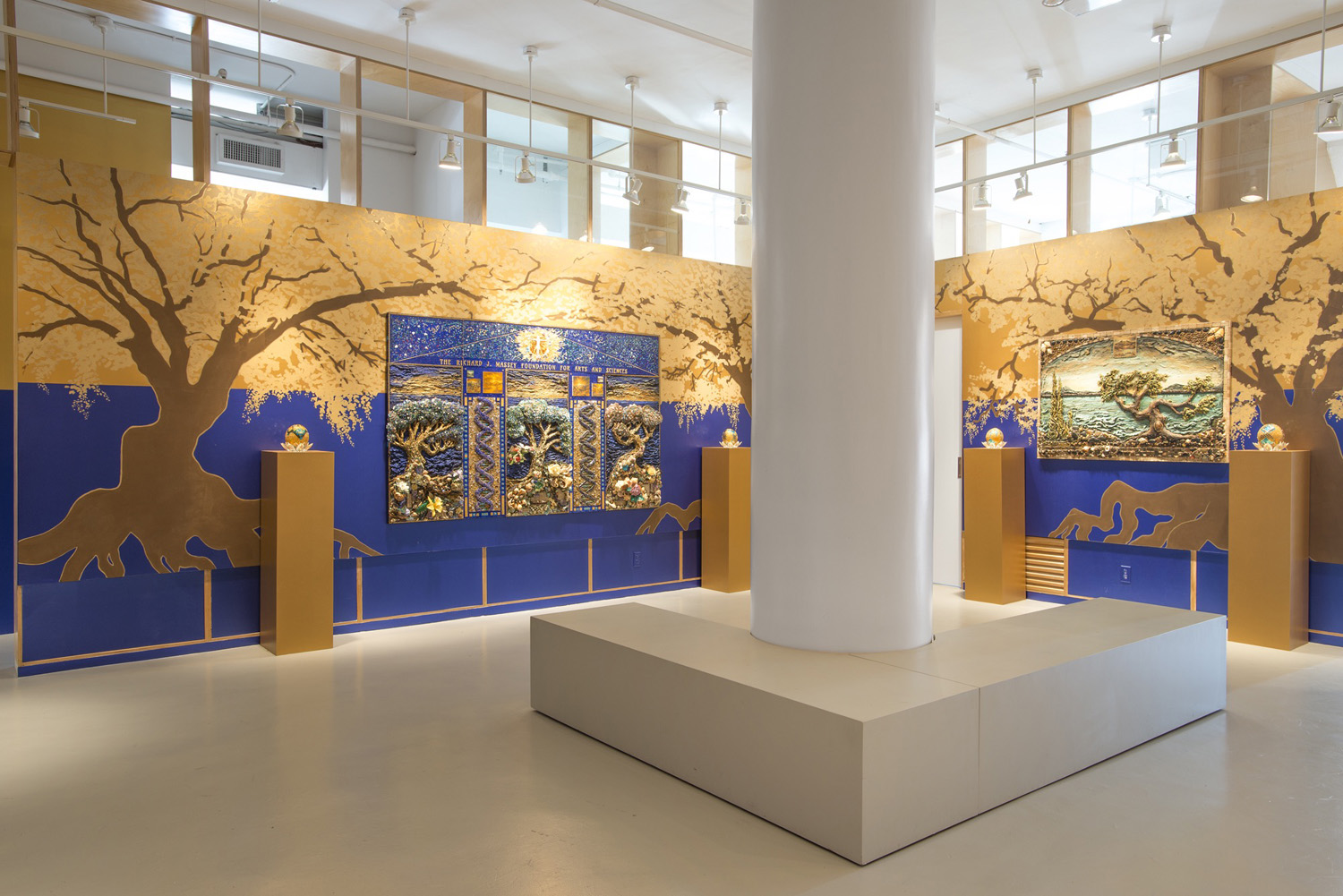
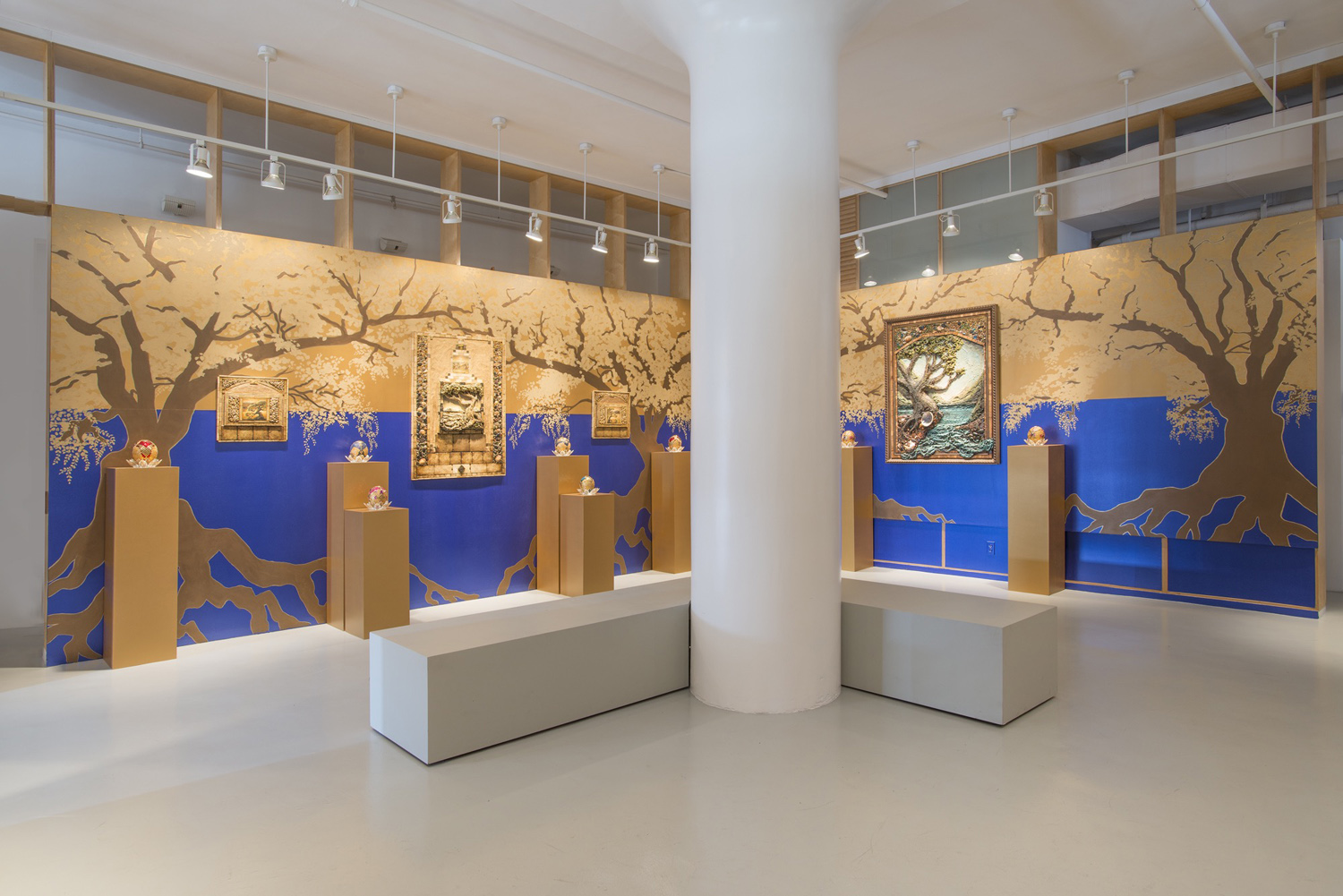
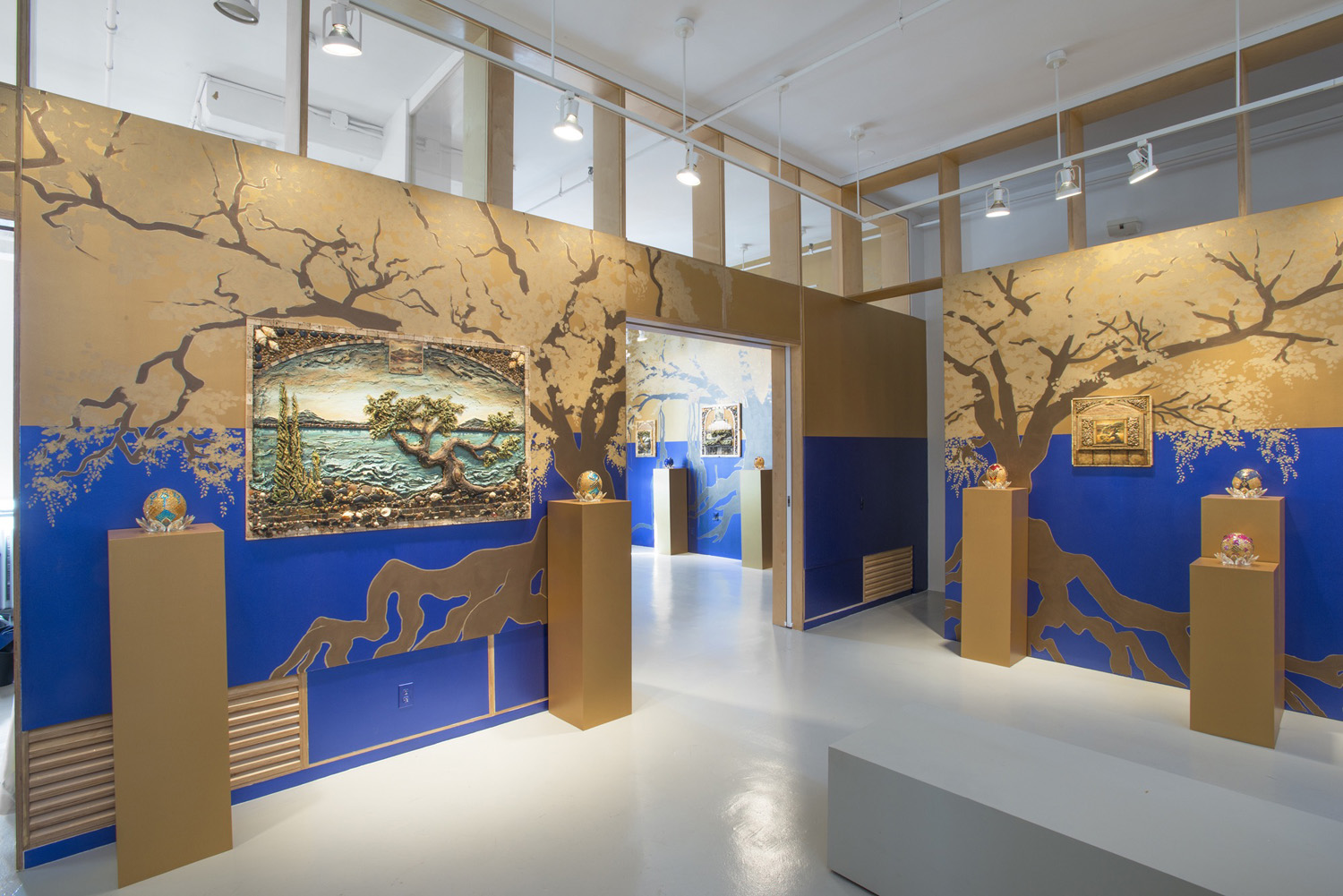
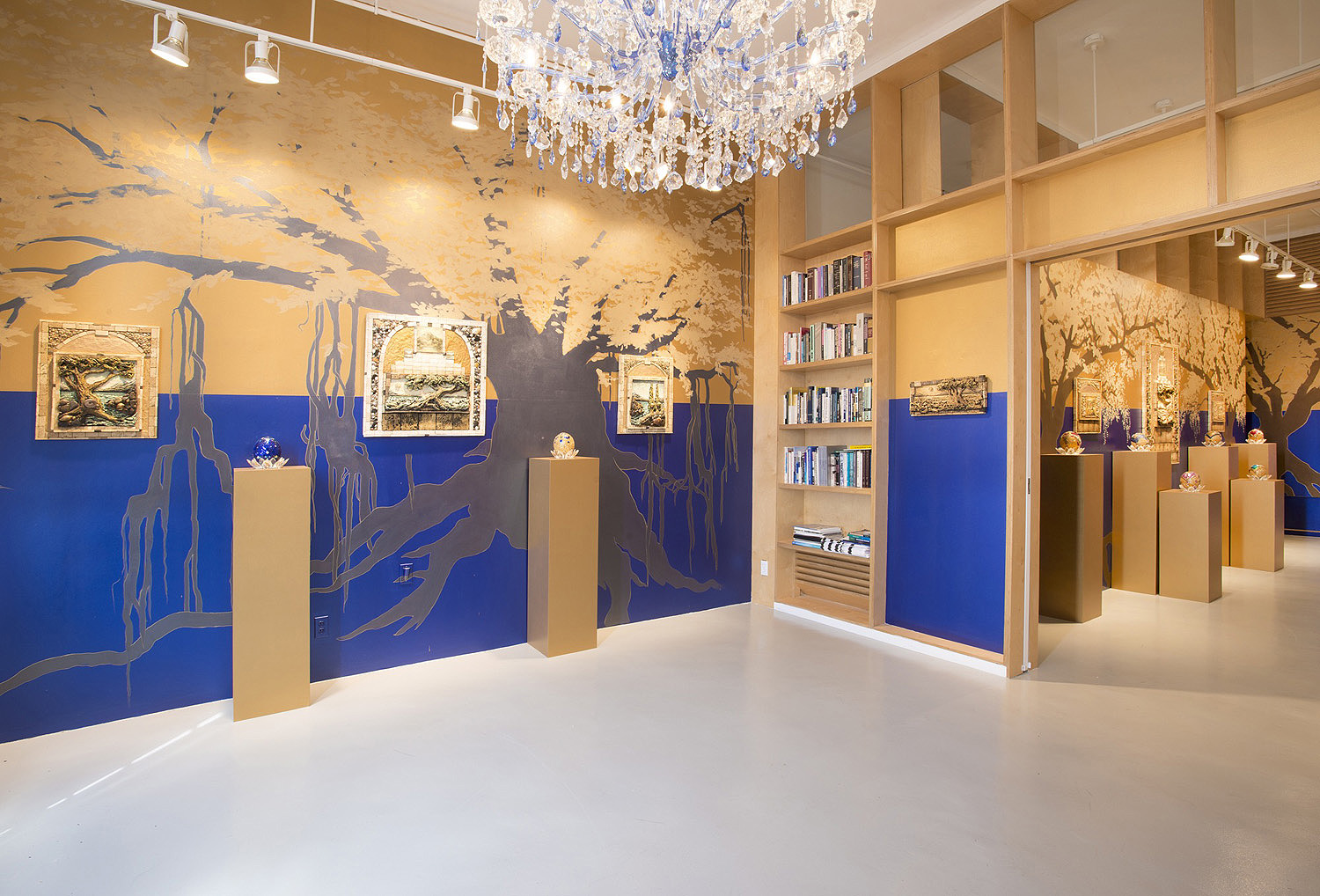
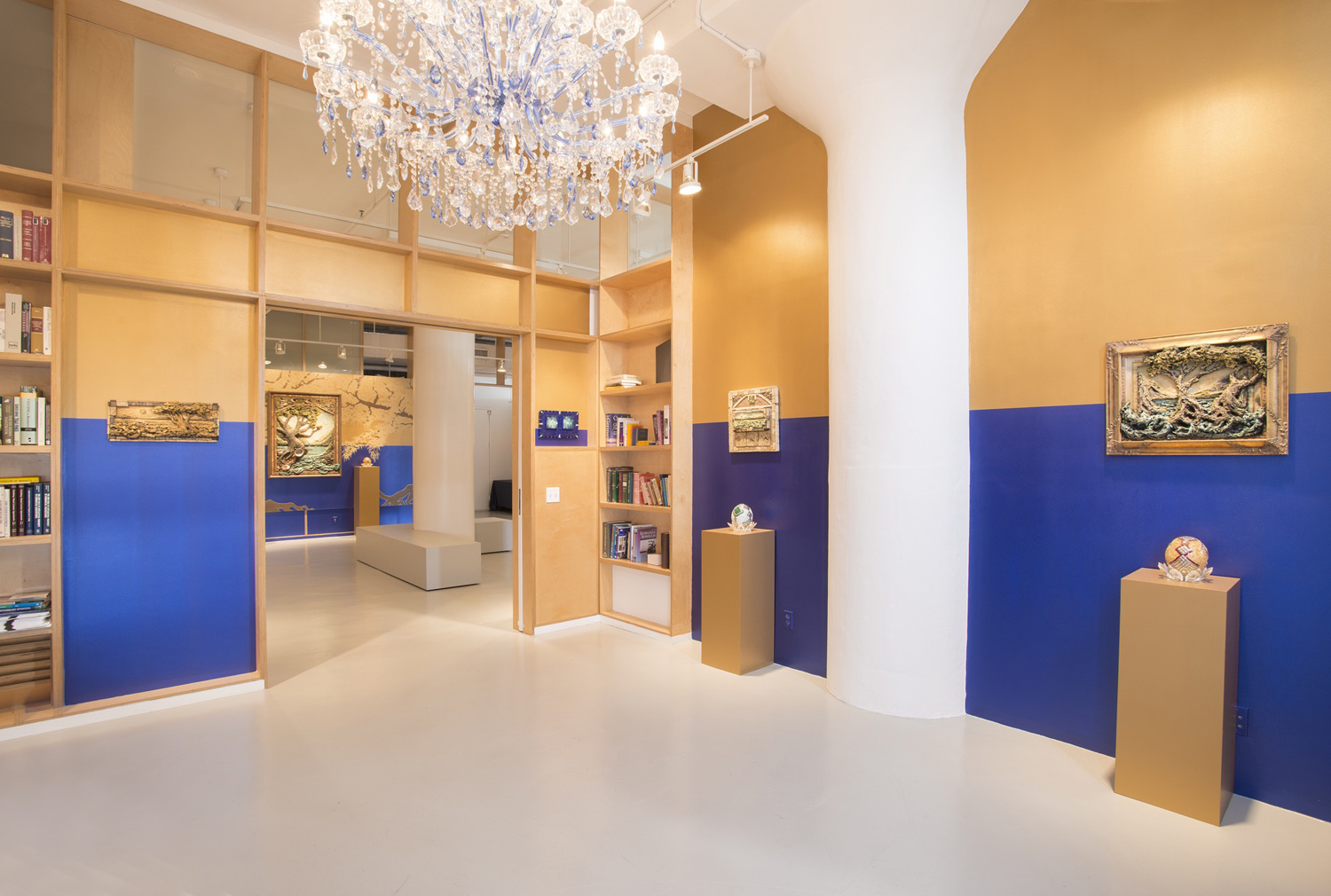
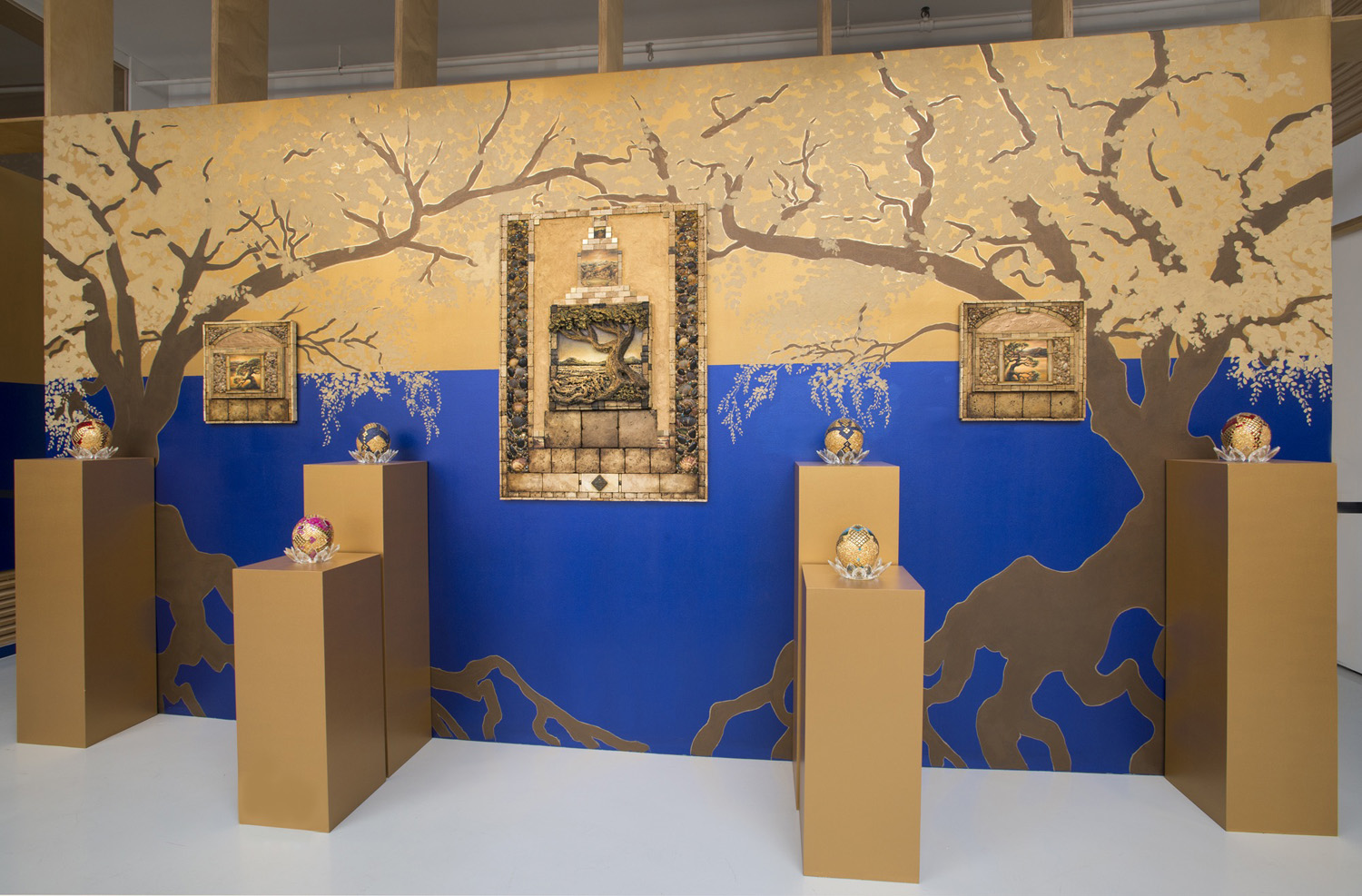
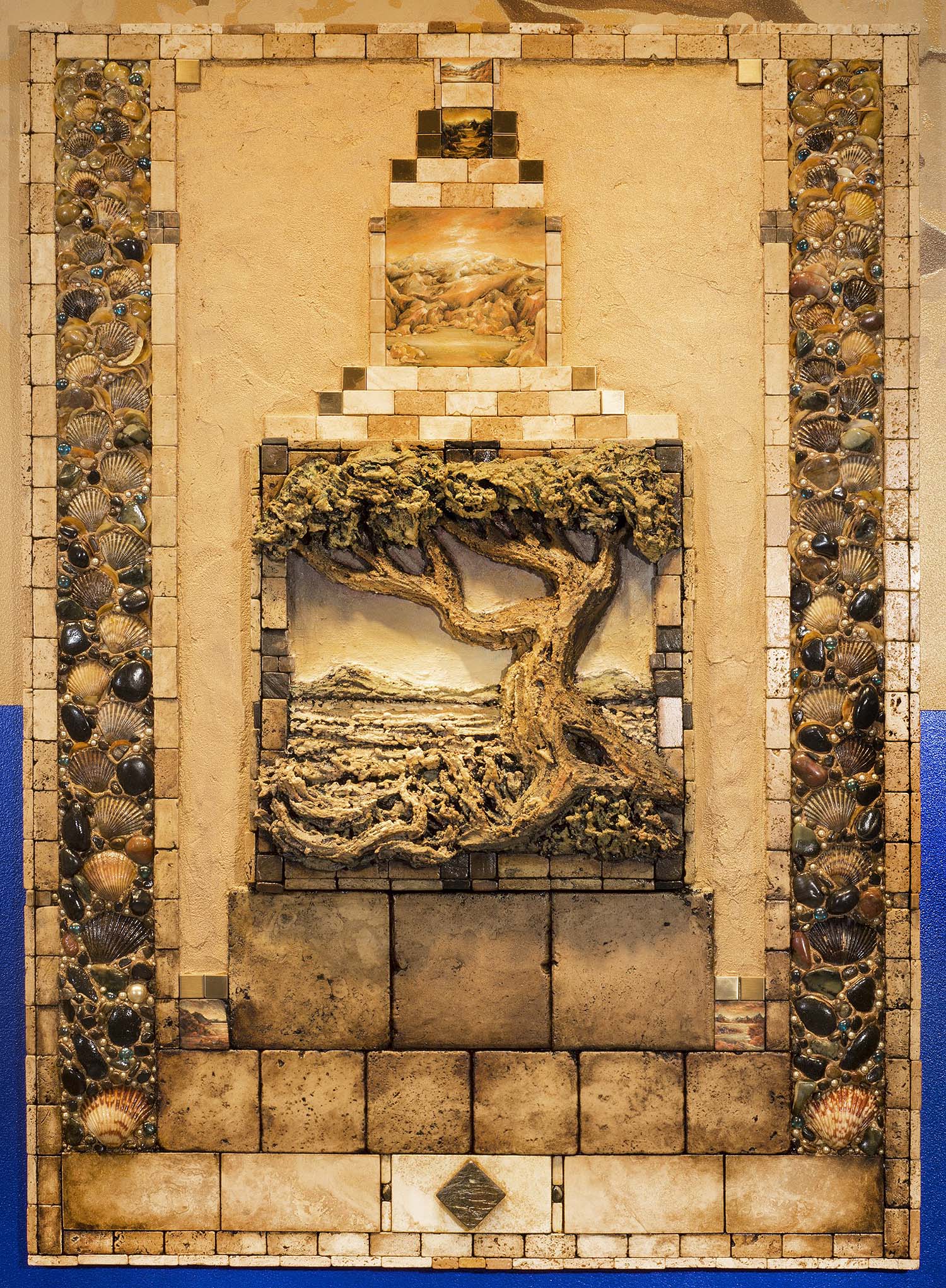
Nature's Decorum
33.5" (w) x 46.75" (h)
Mixed Media
2011
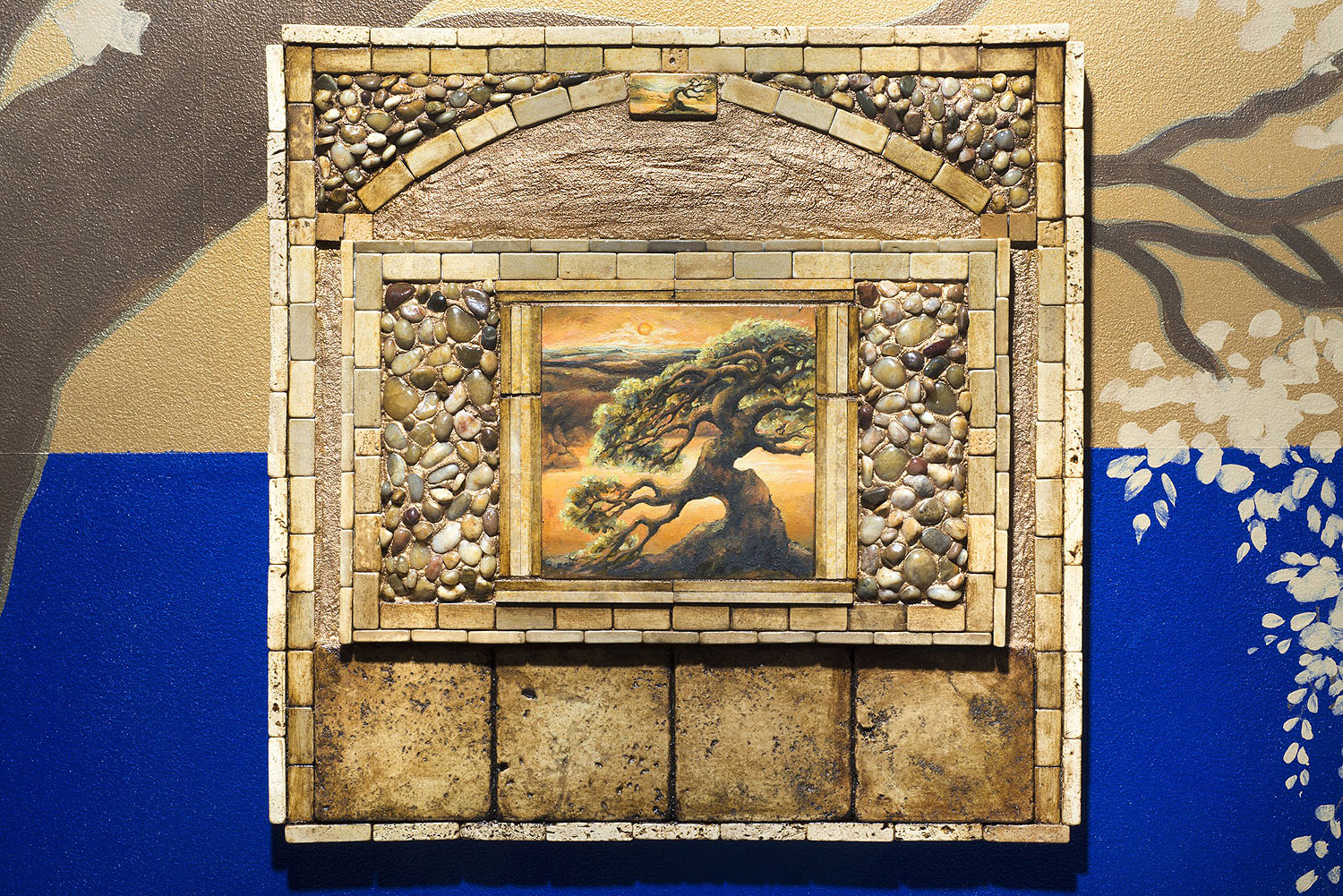
Enchanted Stones
18" (w) x 18" (h)
Mixed Media
2011
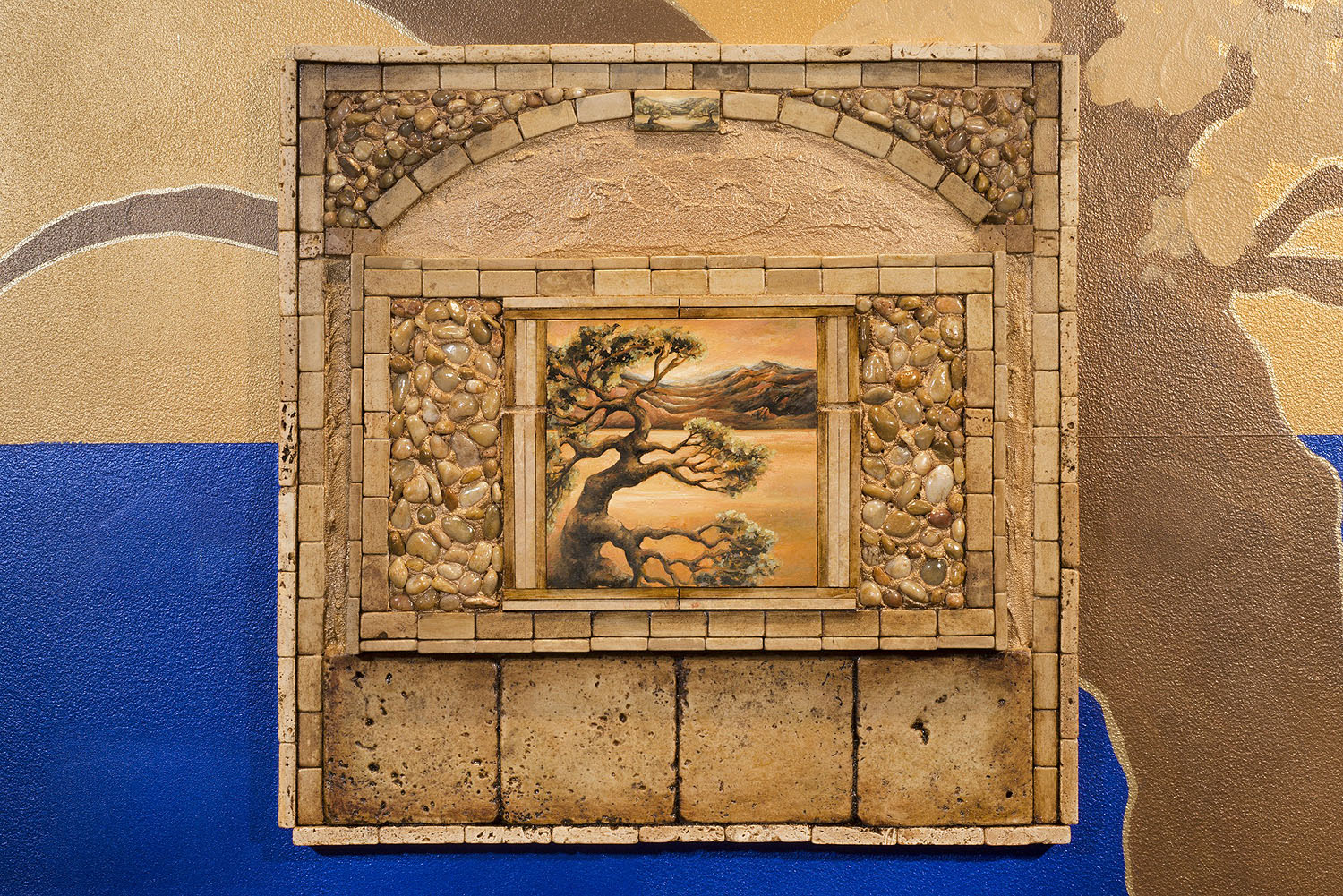
18" (w) x 18" (h)
Mixed Media
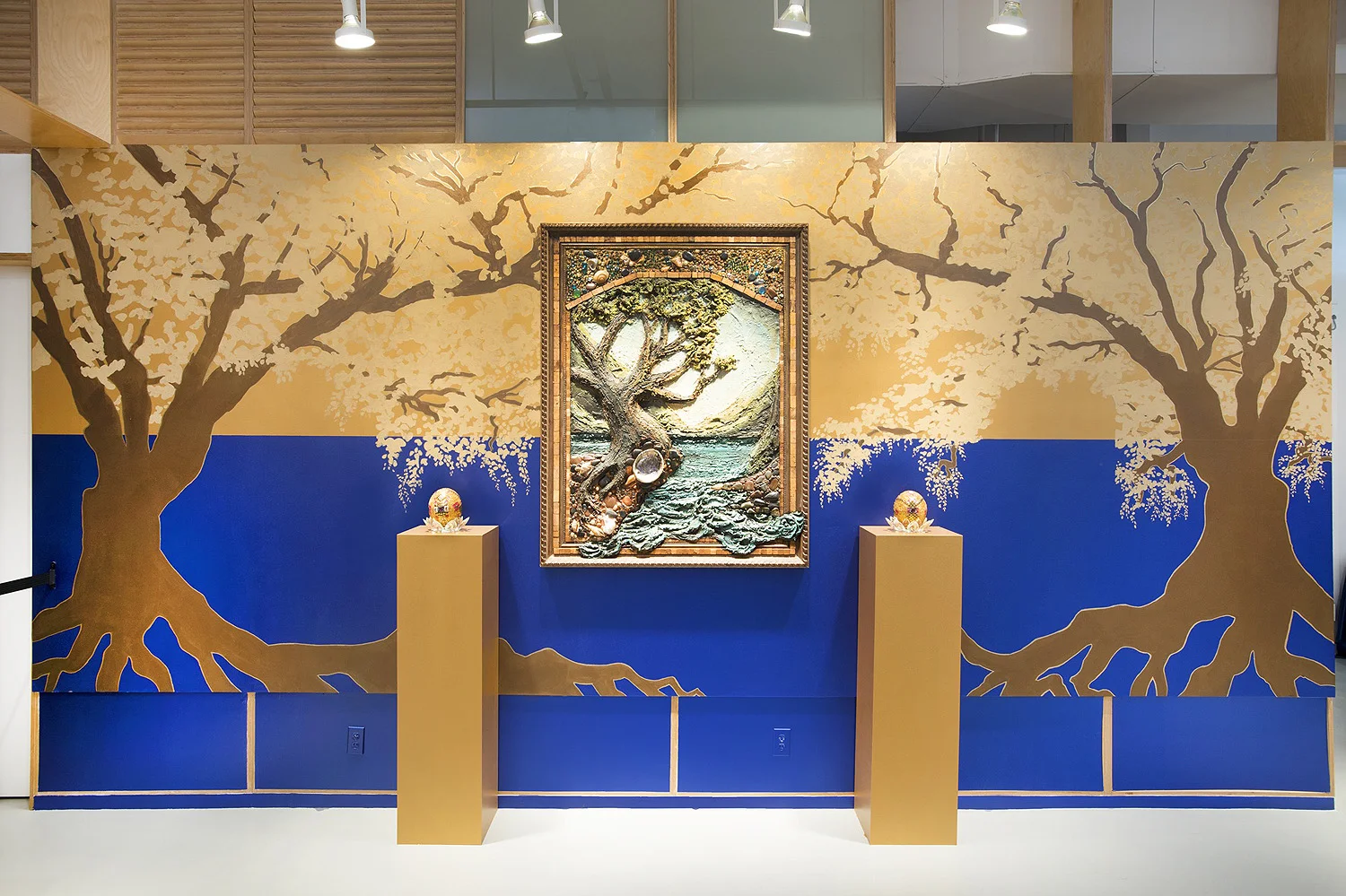
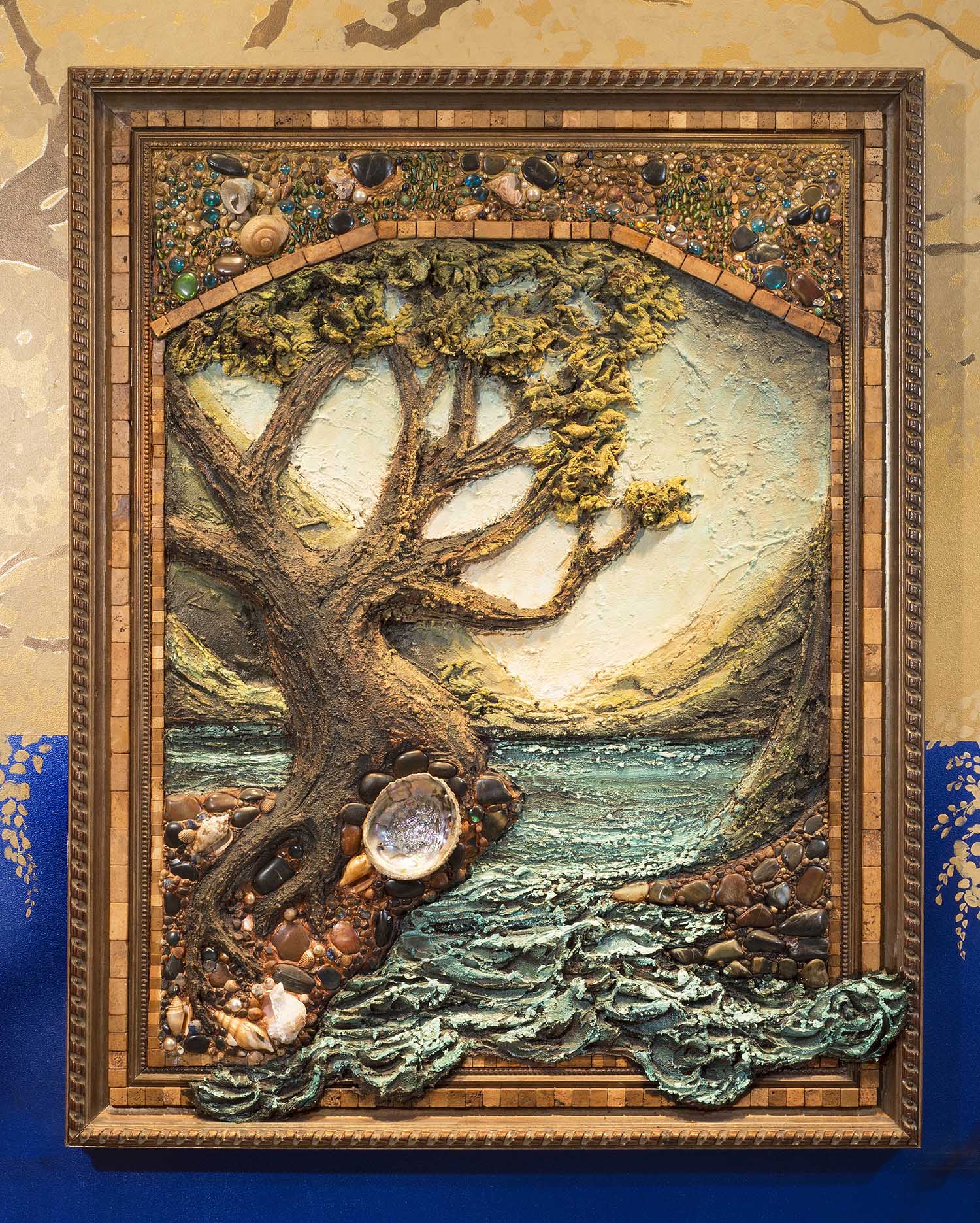
43.25" (w) x 55" (h)
Mixed Media
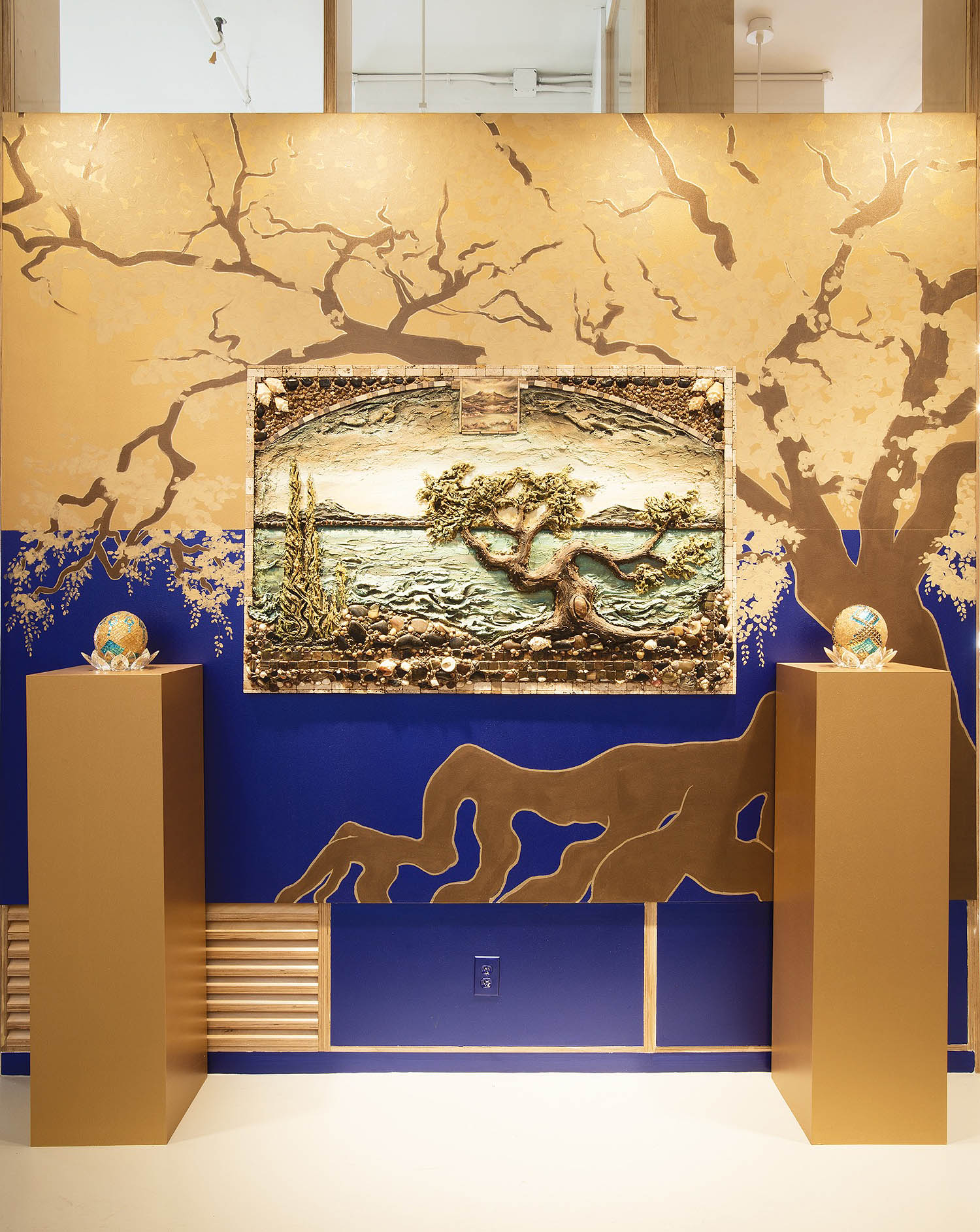
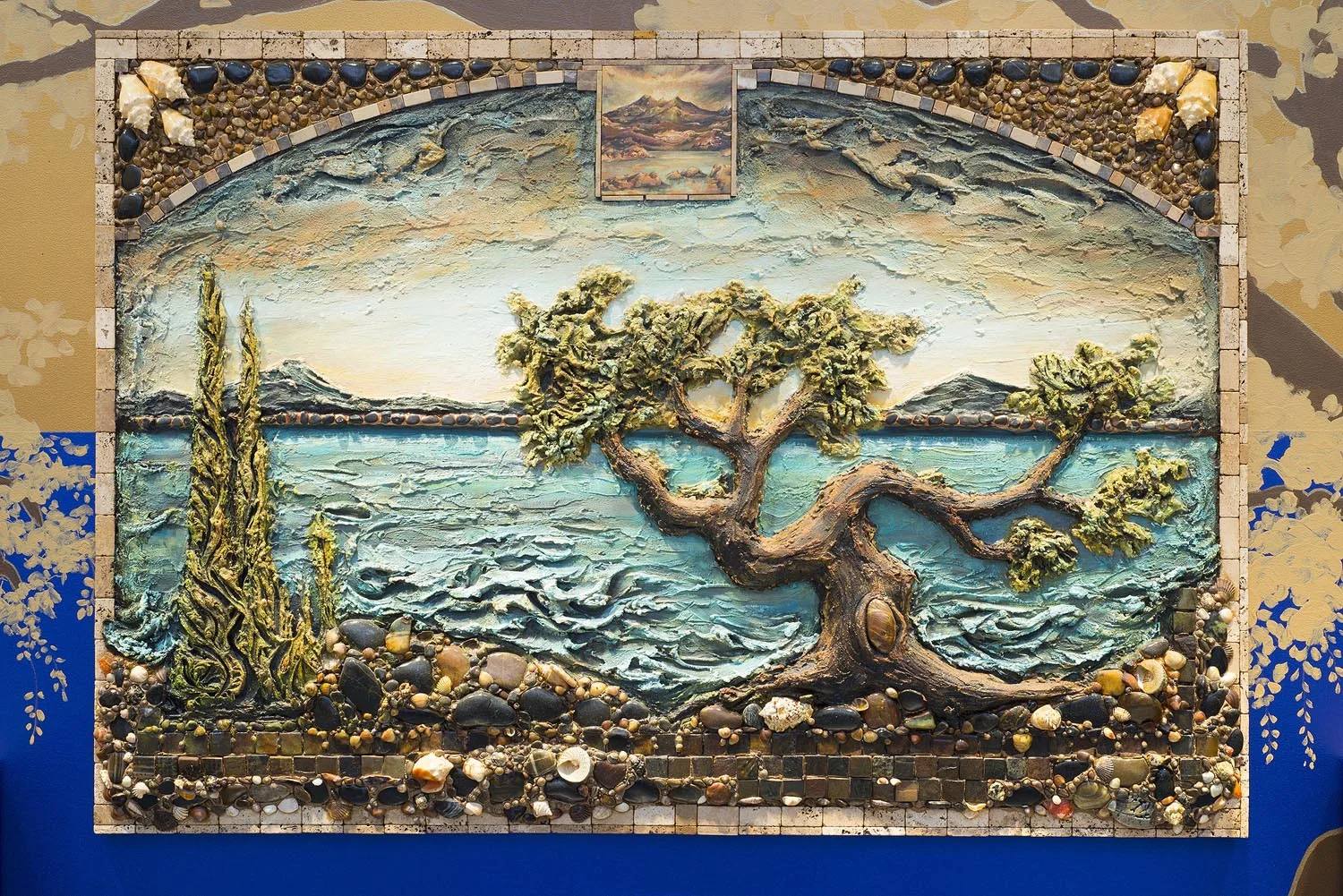
52.75" (w) x 36.5" (h)
Mixed Media
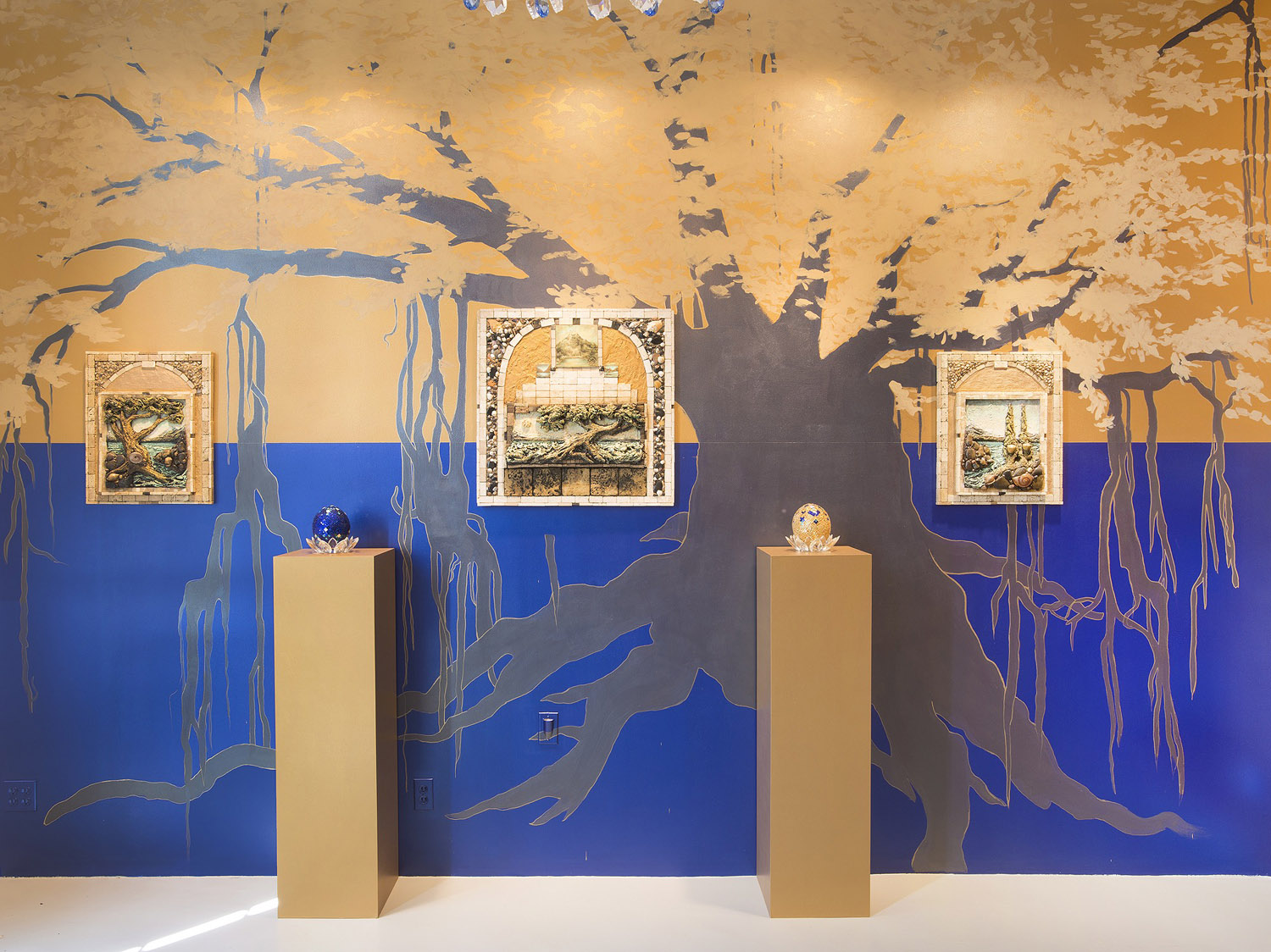
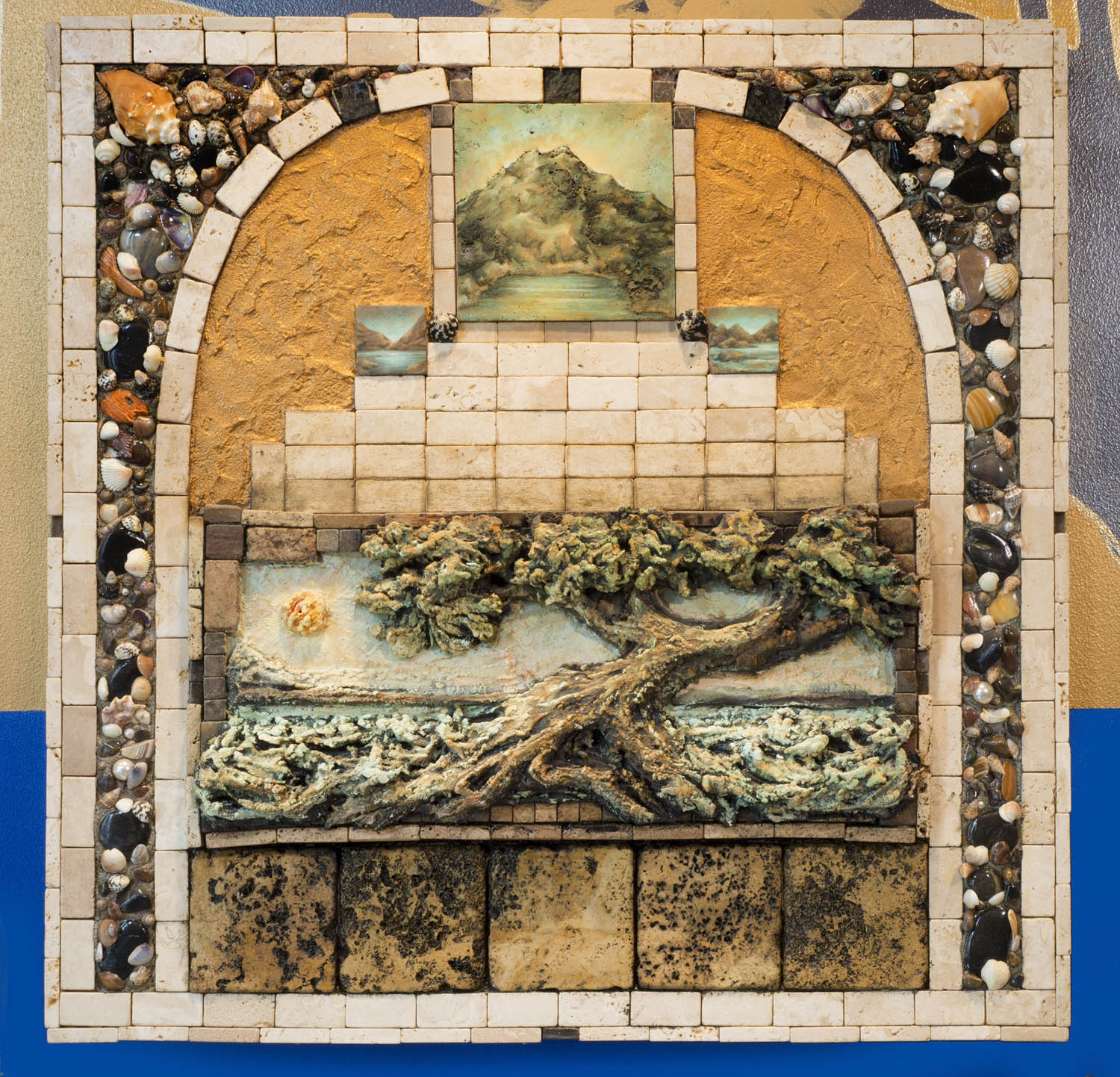
27.75" (w) x 27.75" (h)
Mixed Media
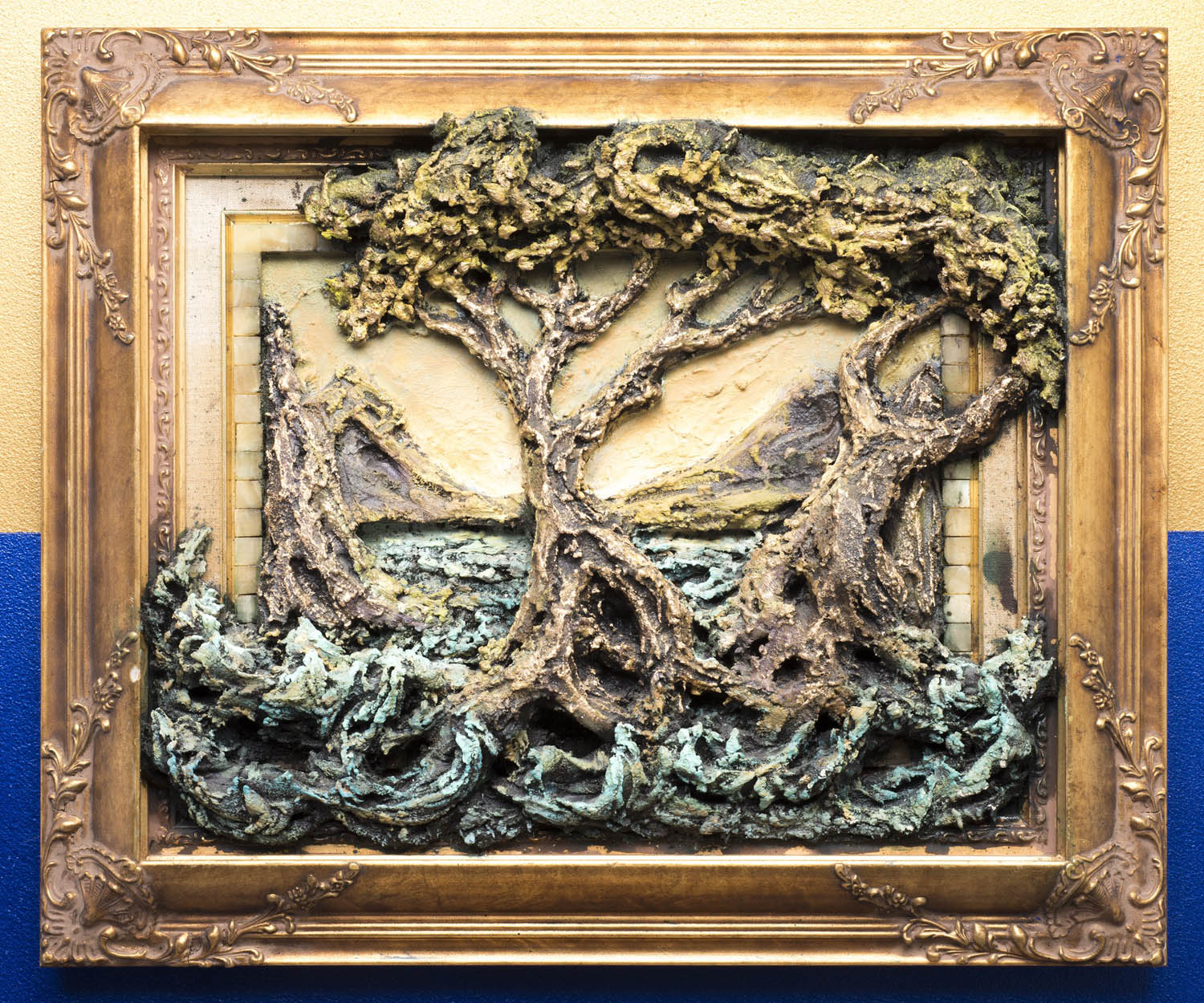
11.5" (w) x 19.5" (h)
Mixed Media
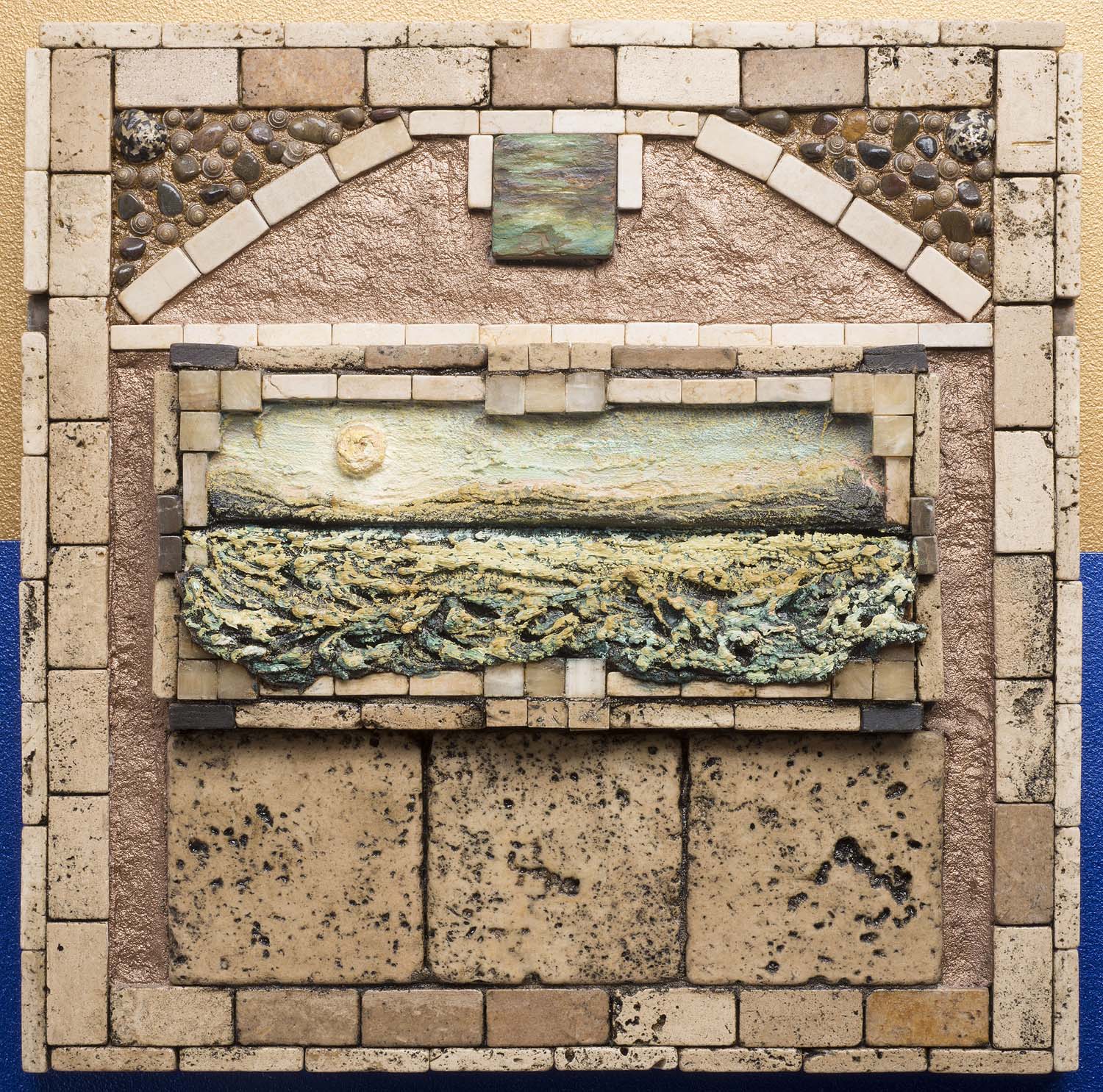
16.25" (w) x 16.25" (h)
Mixed Media
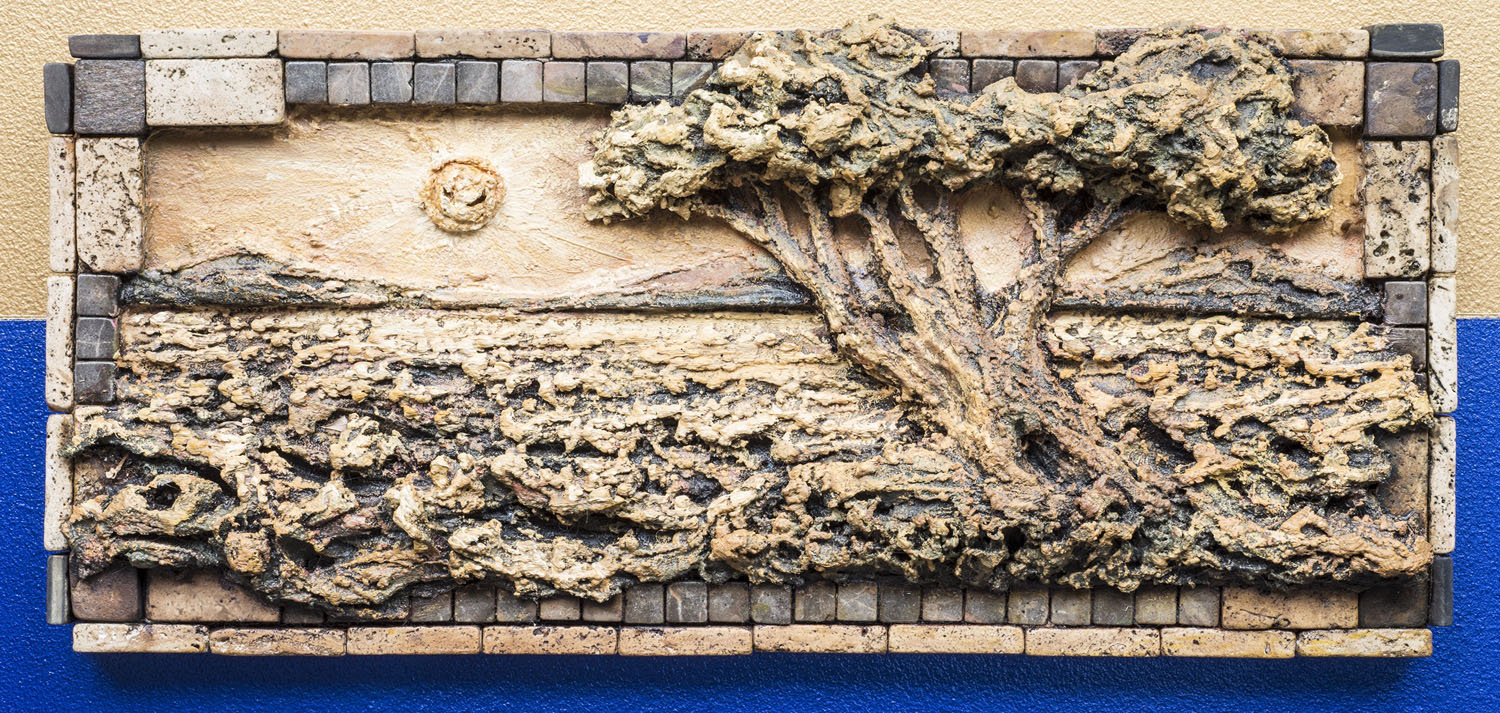
19.75" (w) x 8.5" (h)
Mixed Media
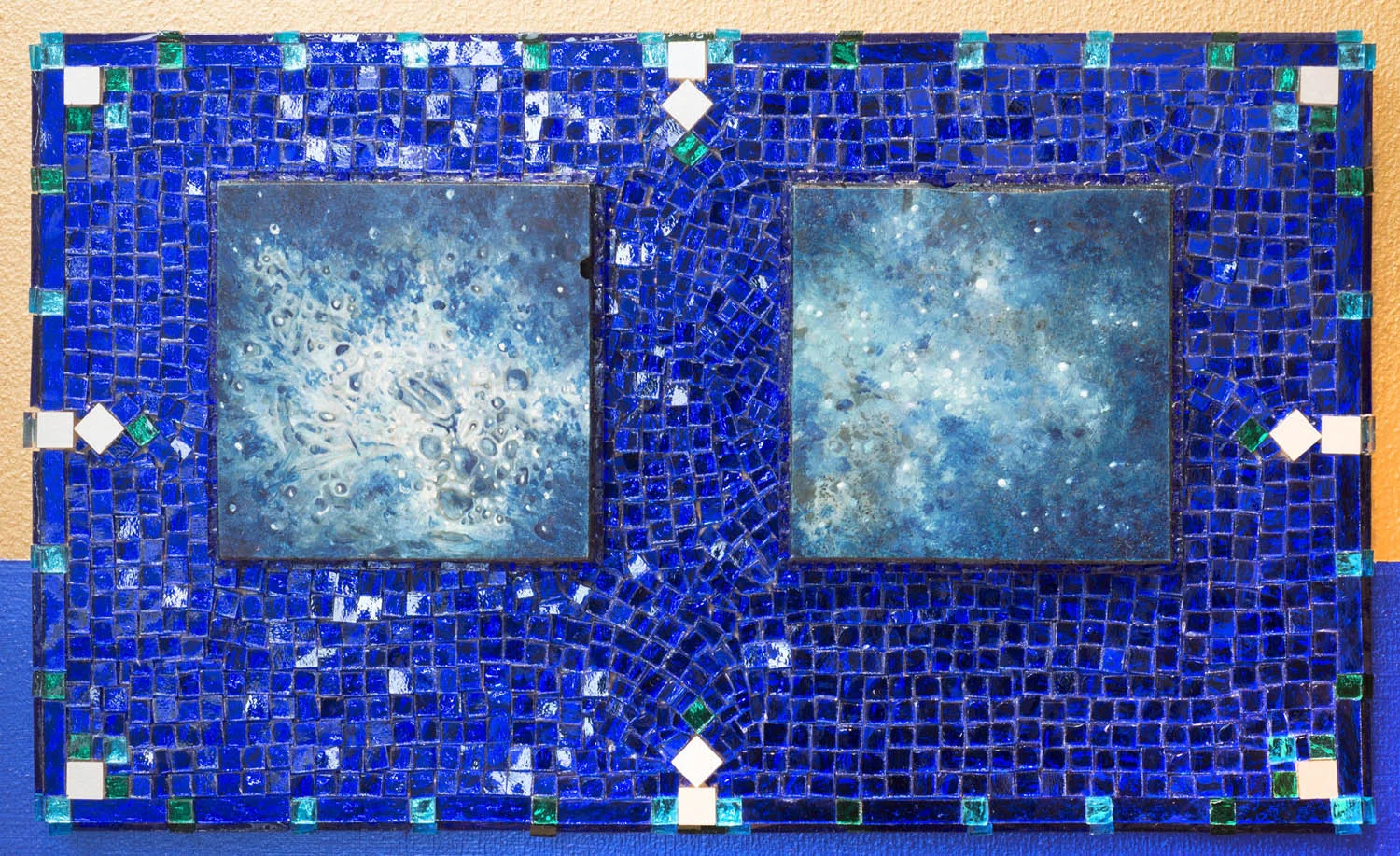
14" (w) x 8.5" (h)
Mixed Media
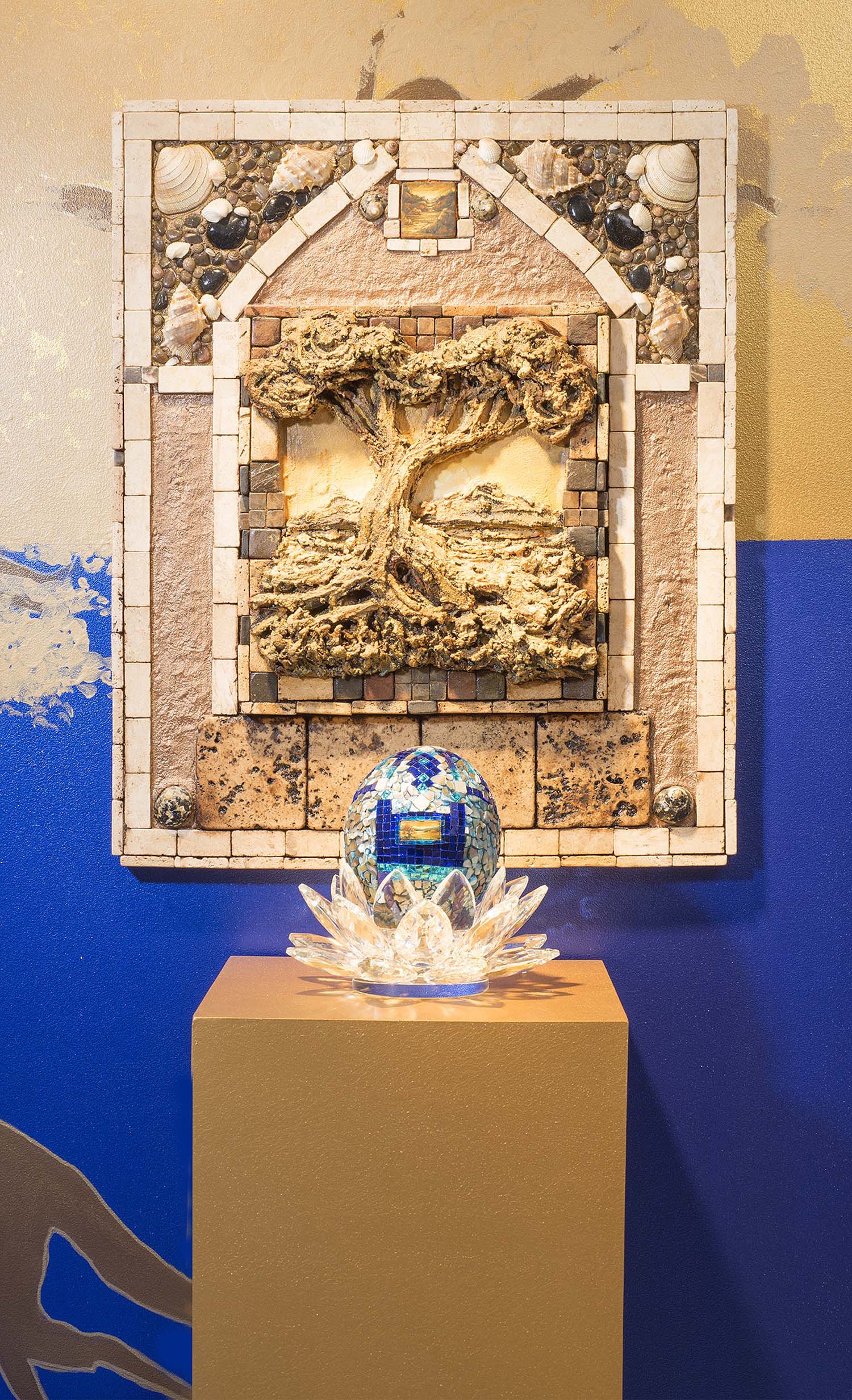
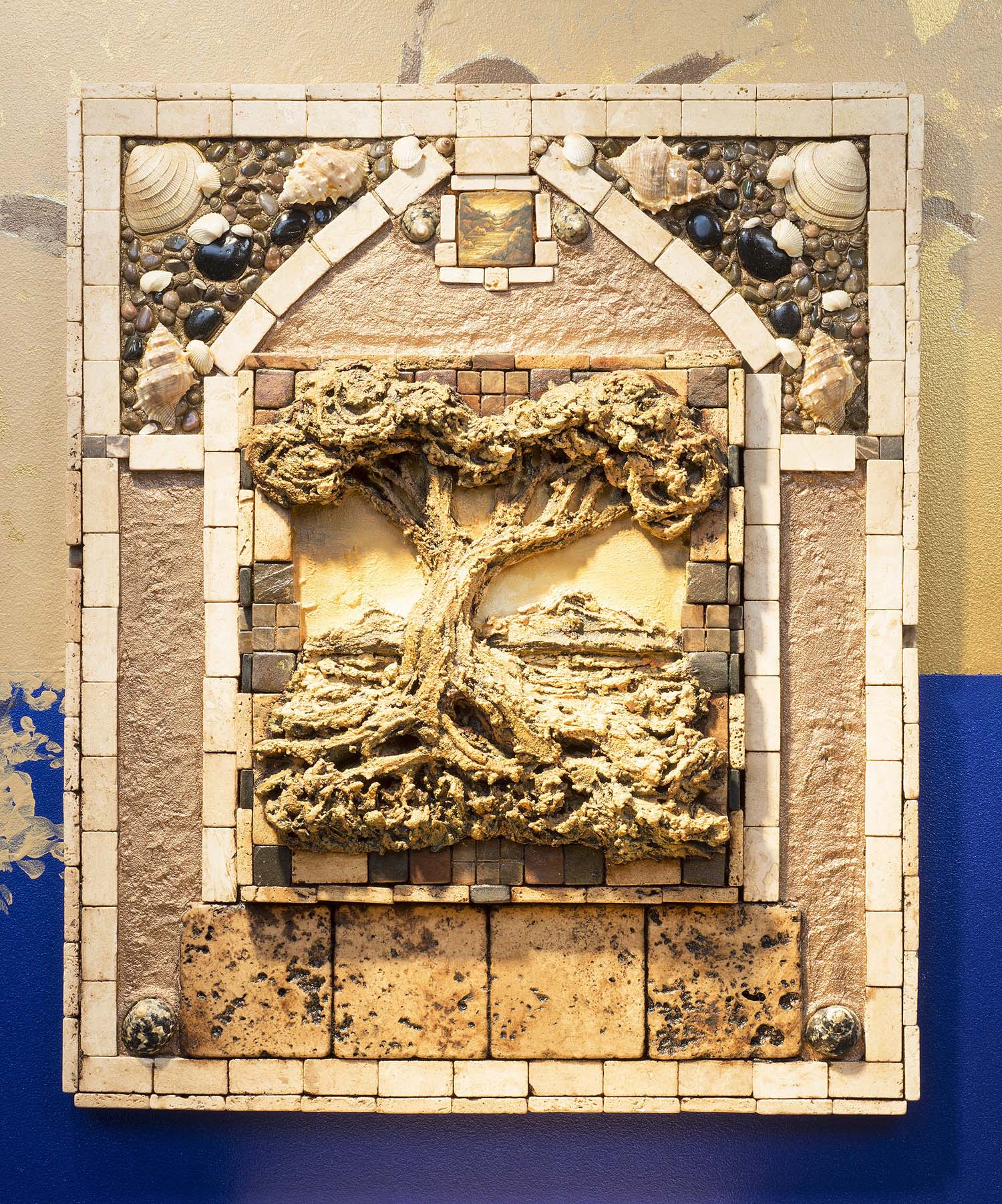
21.75" (w) x 26.25" (h)
Mixed Media
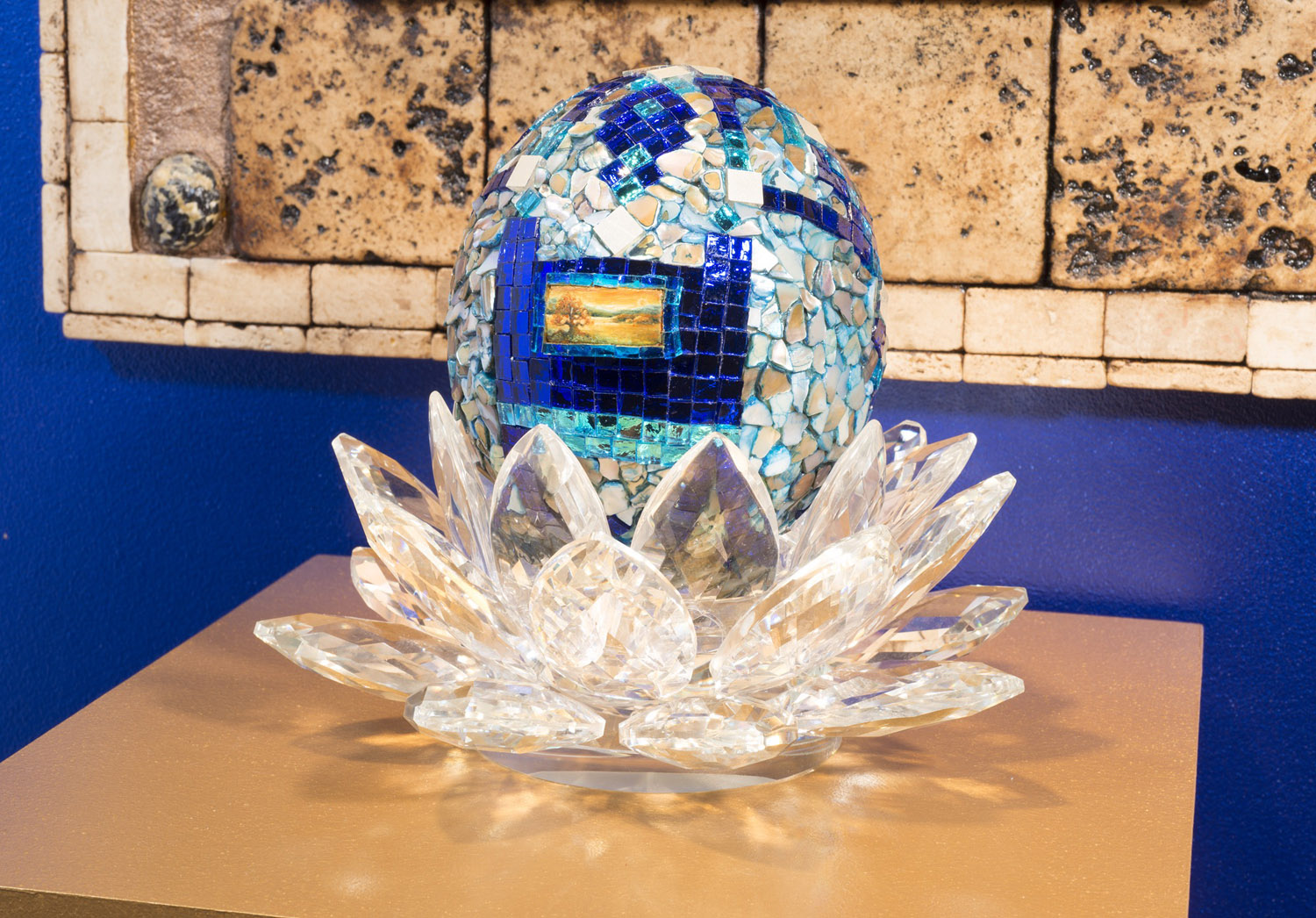
Egg #1
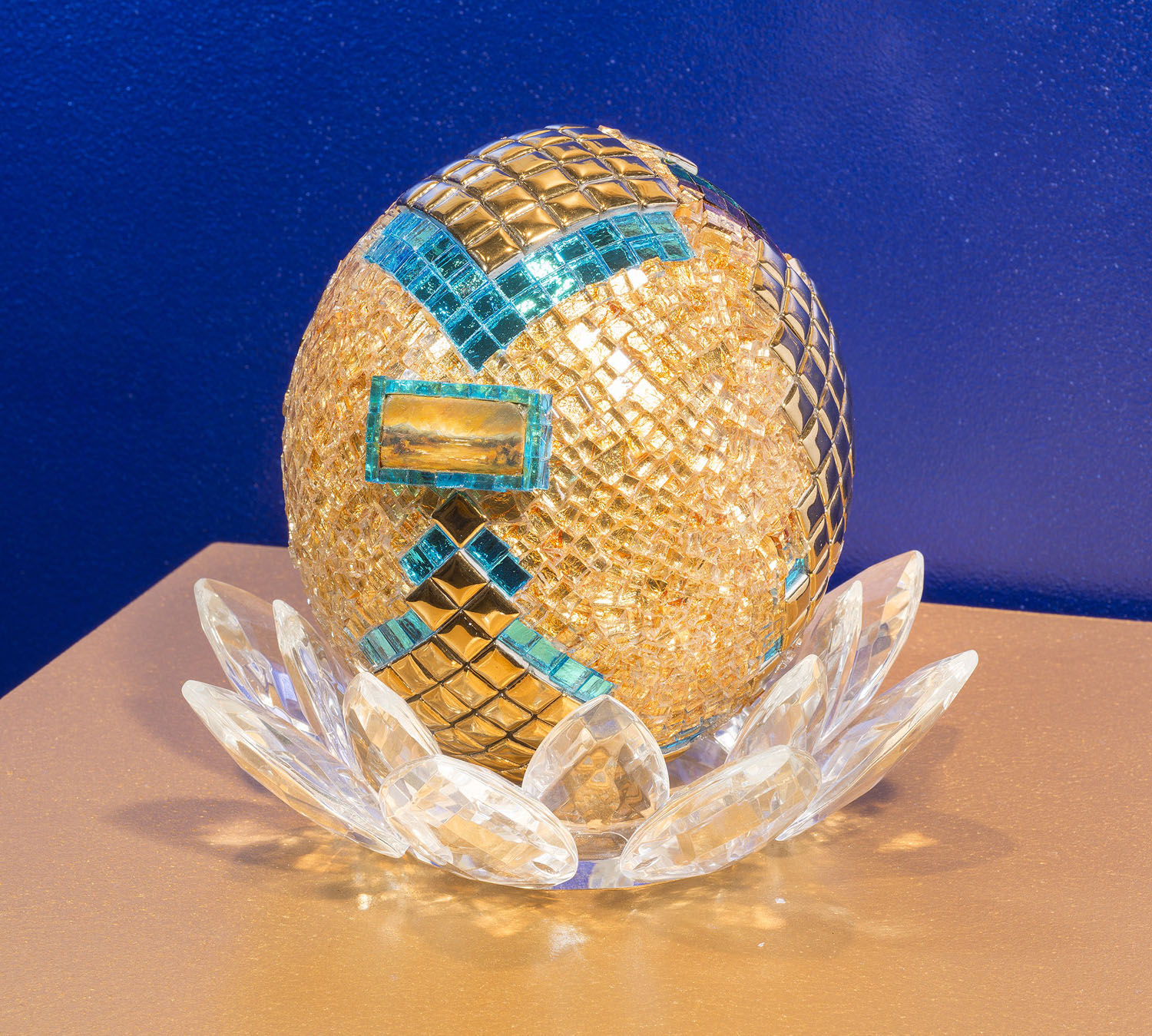
Egg #2
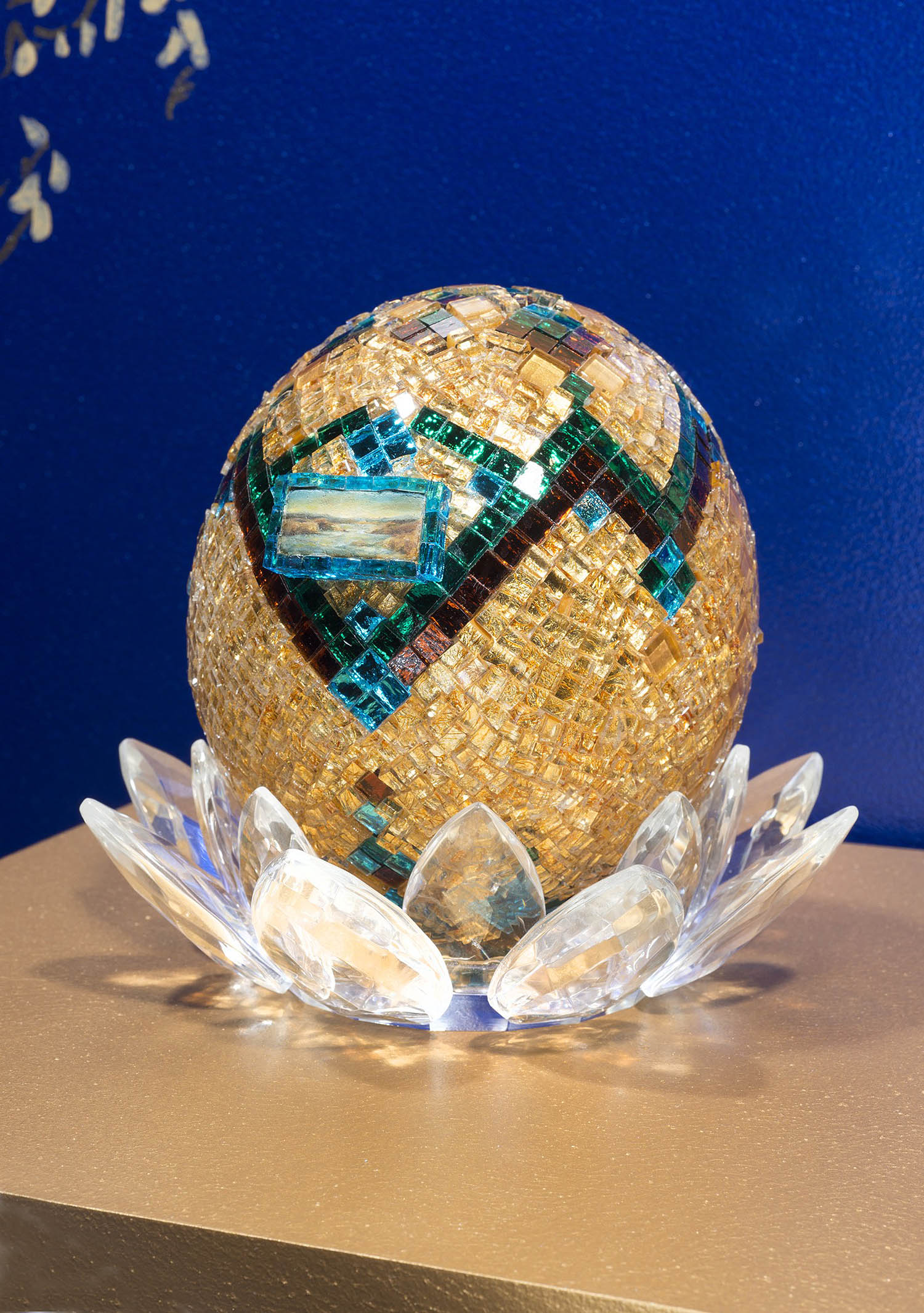
Egg #3
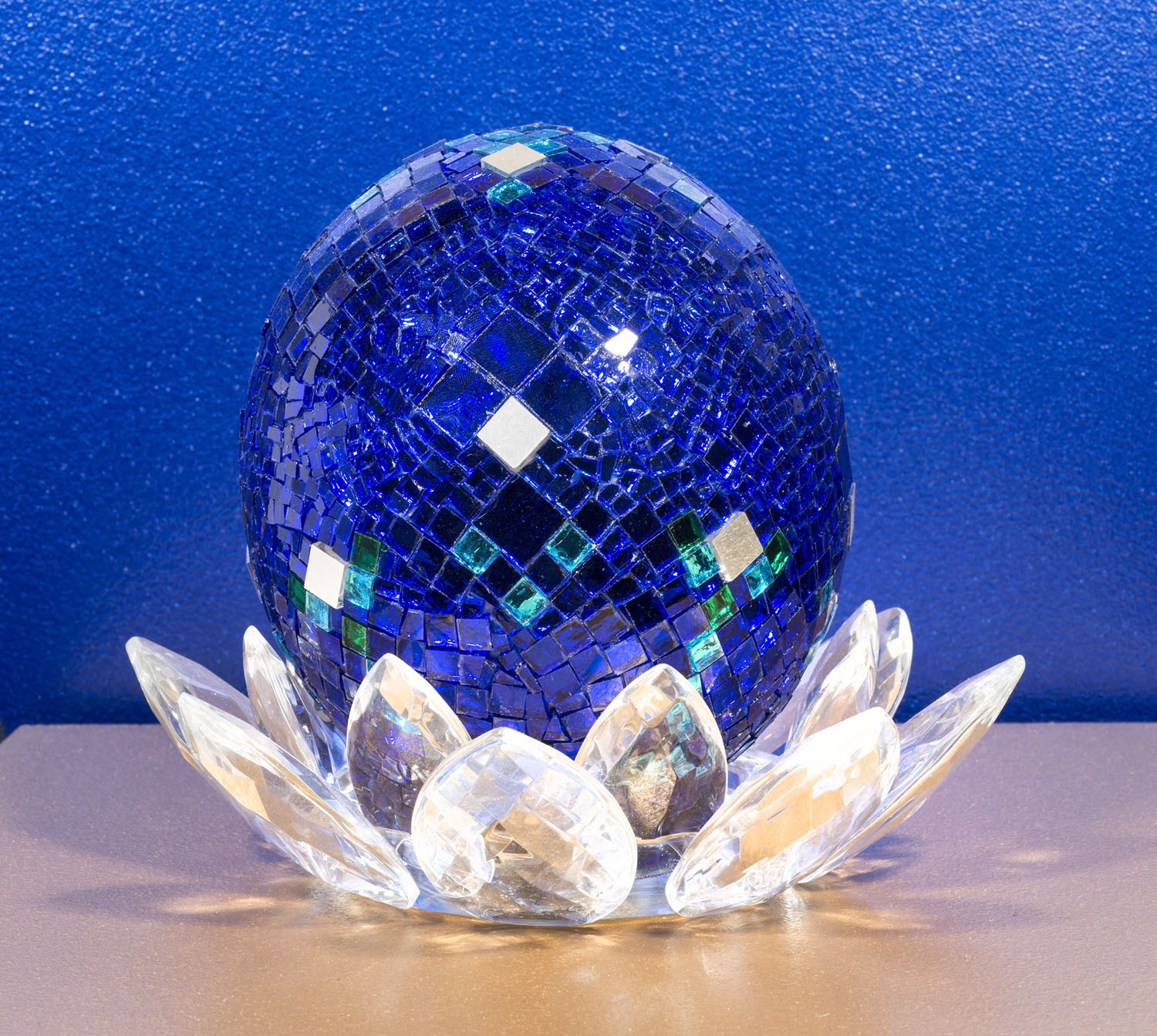
Egg #4
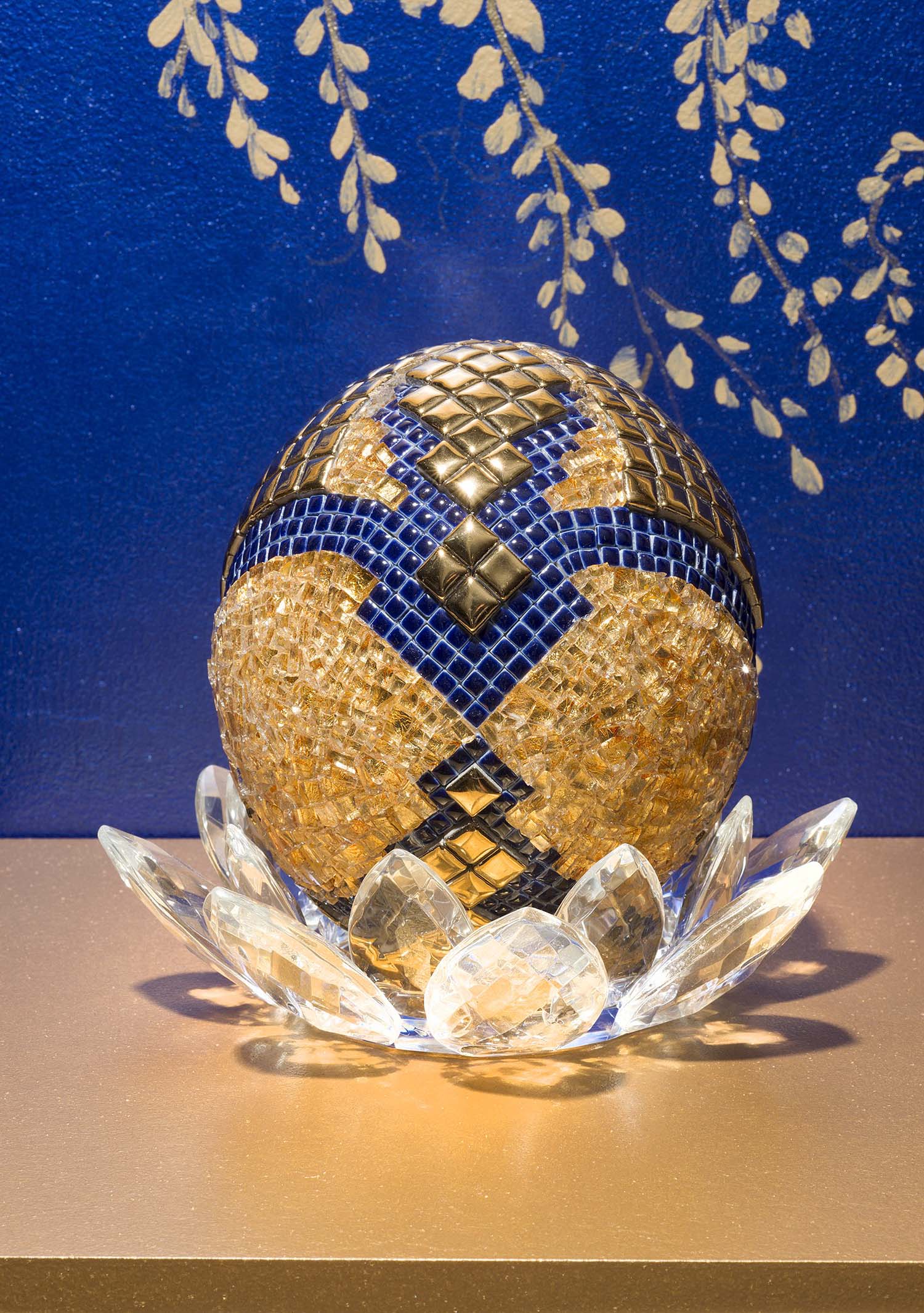
Egg #5
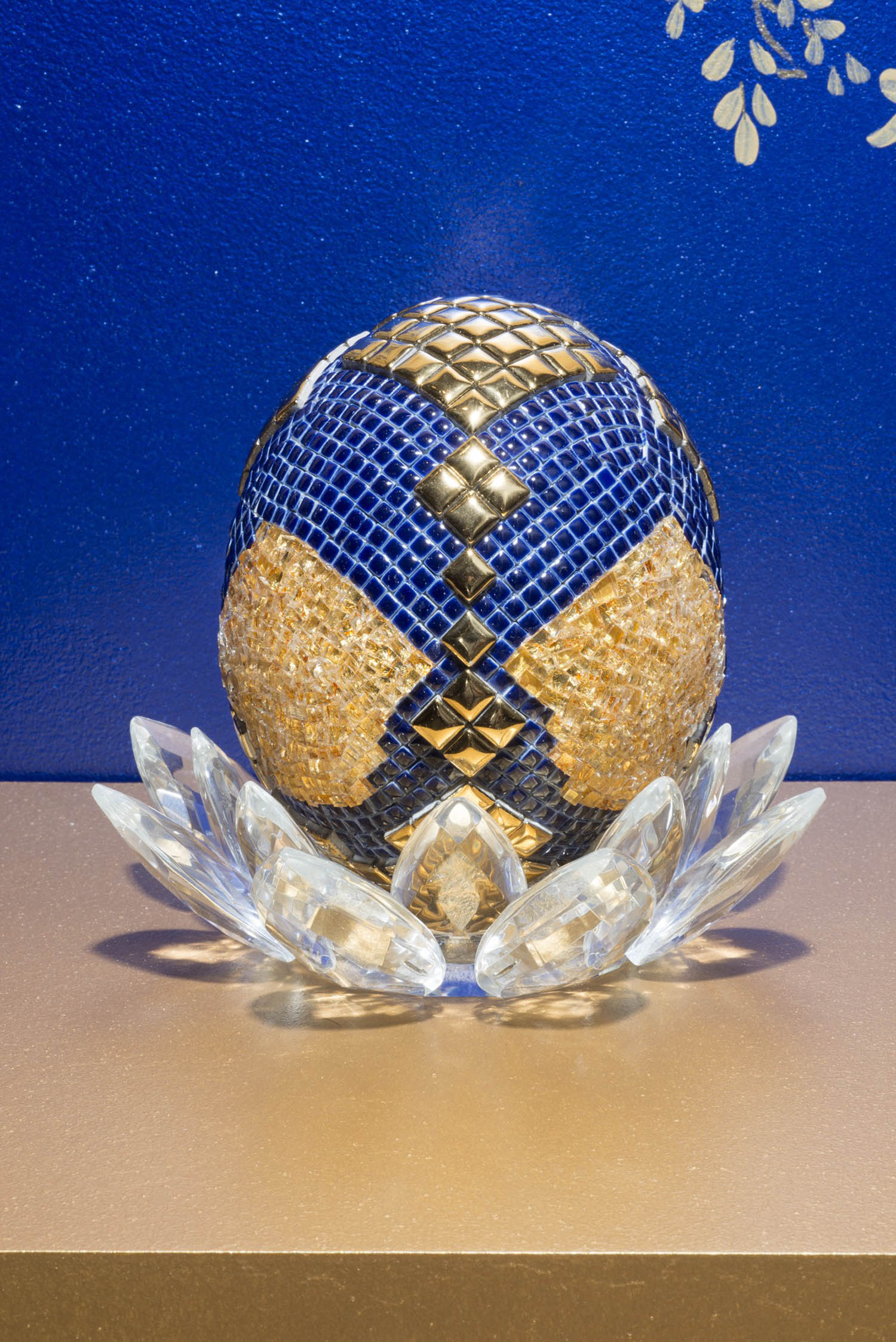
Egg #6
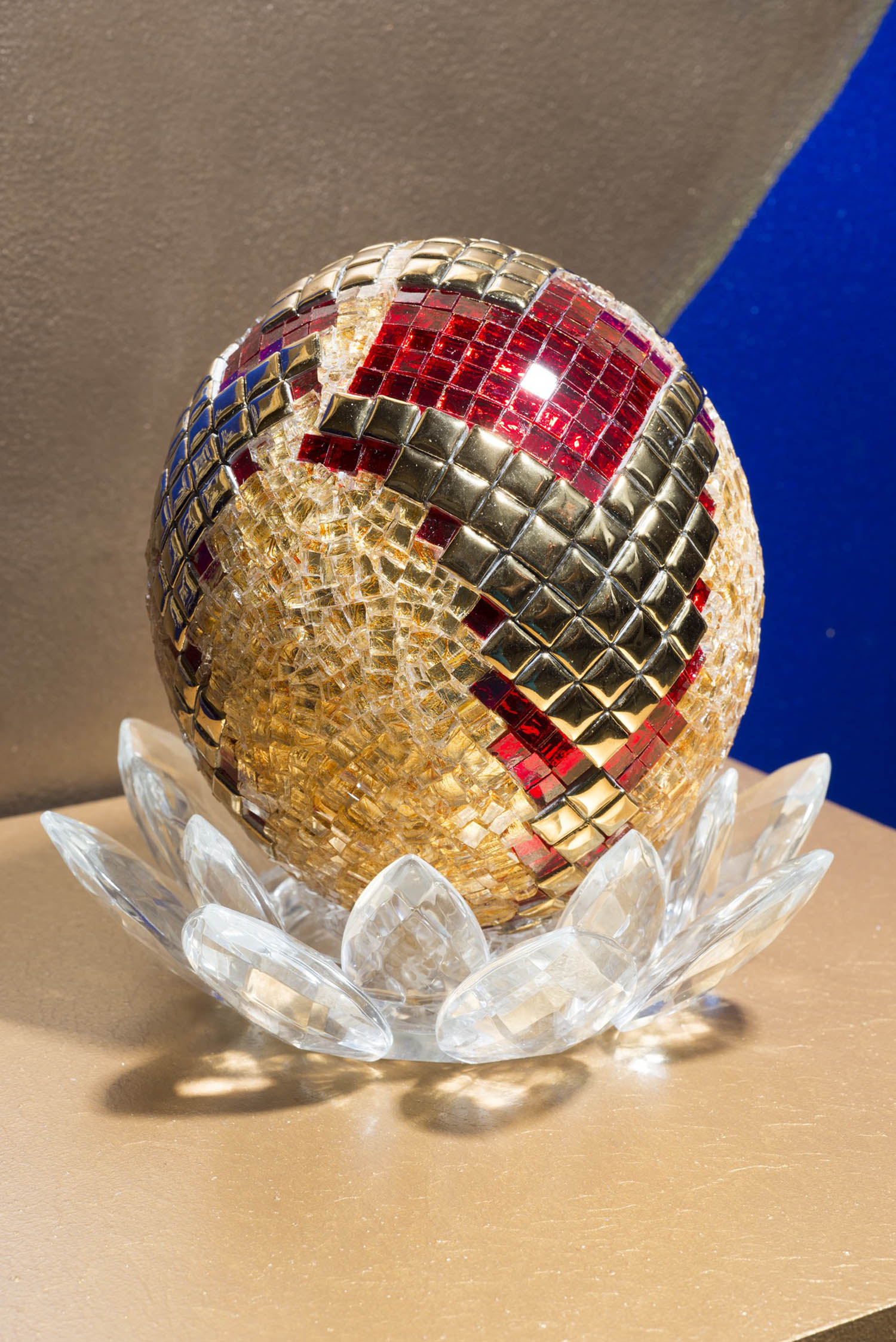
Egg #7
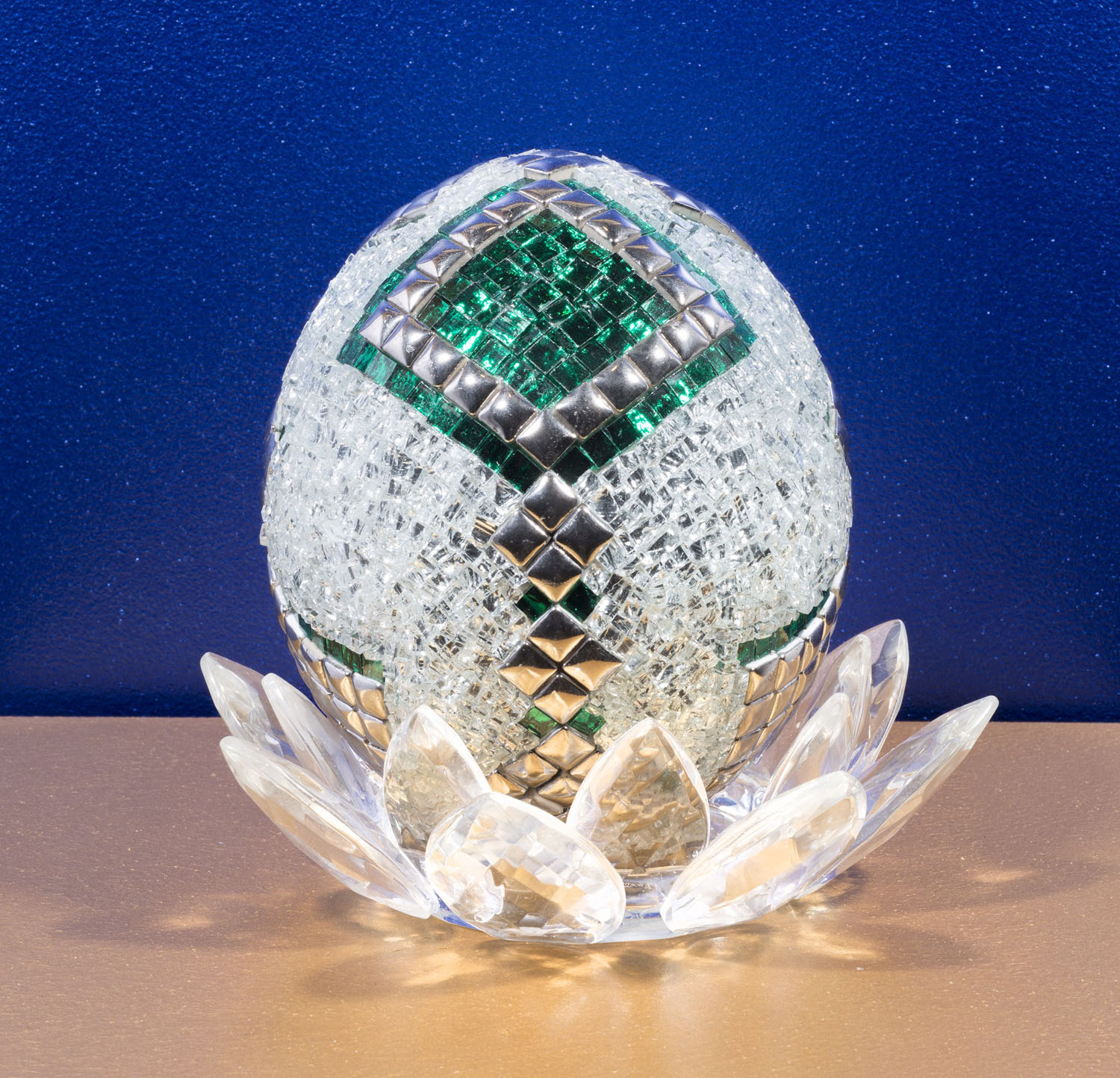
Egg #8
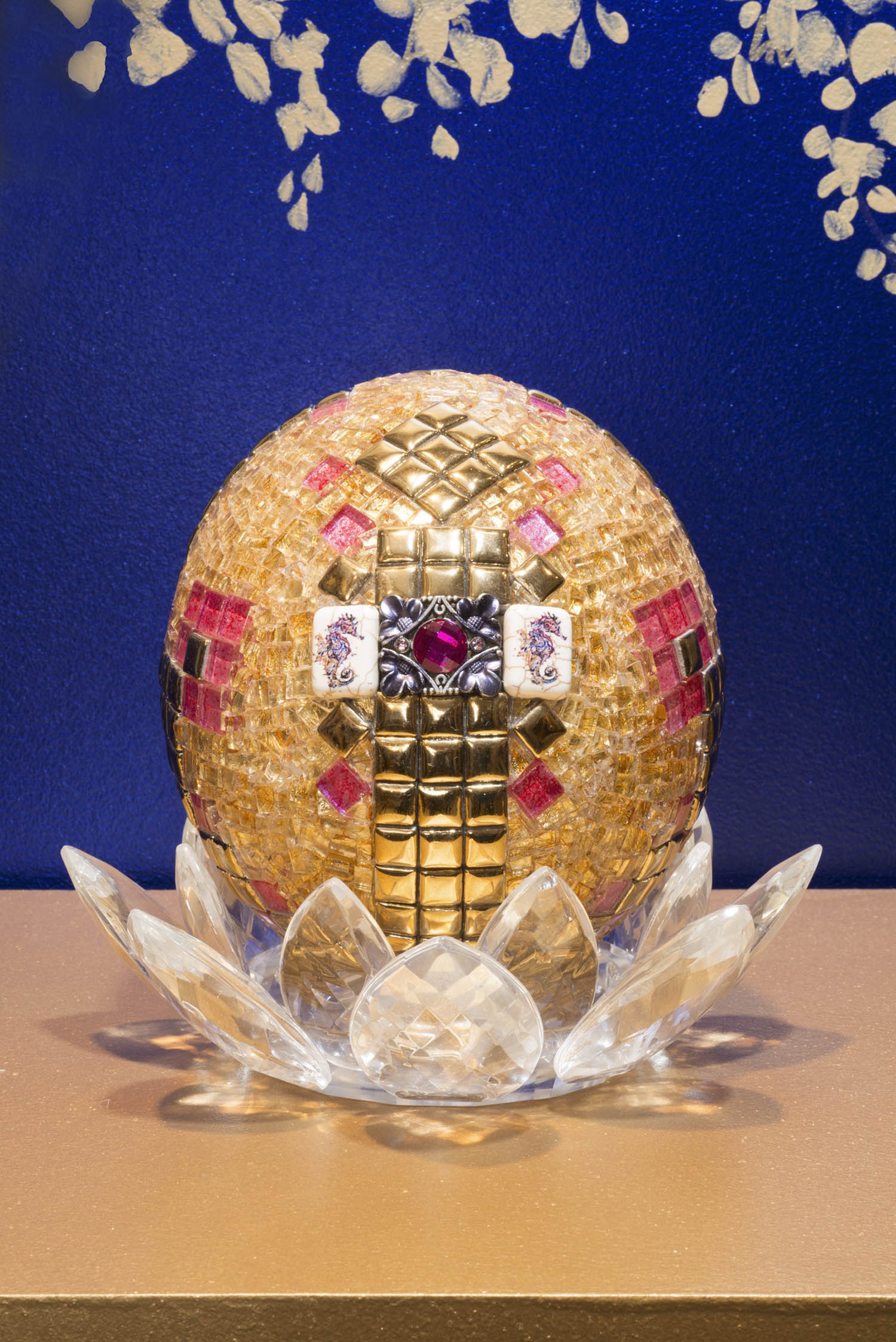
Egg #9
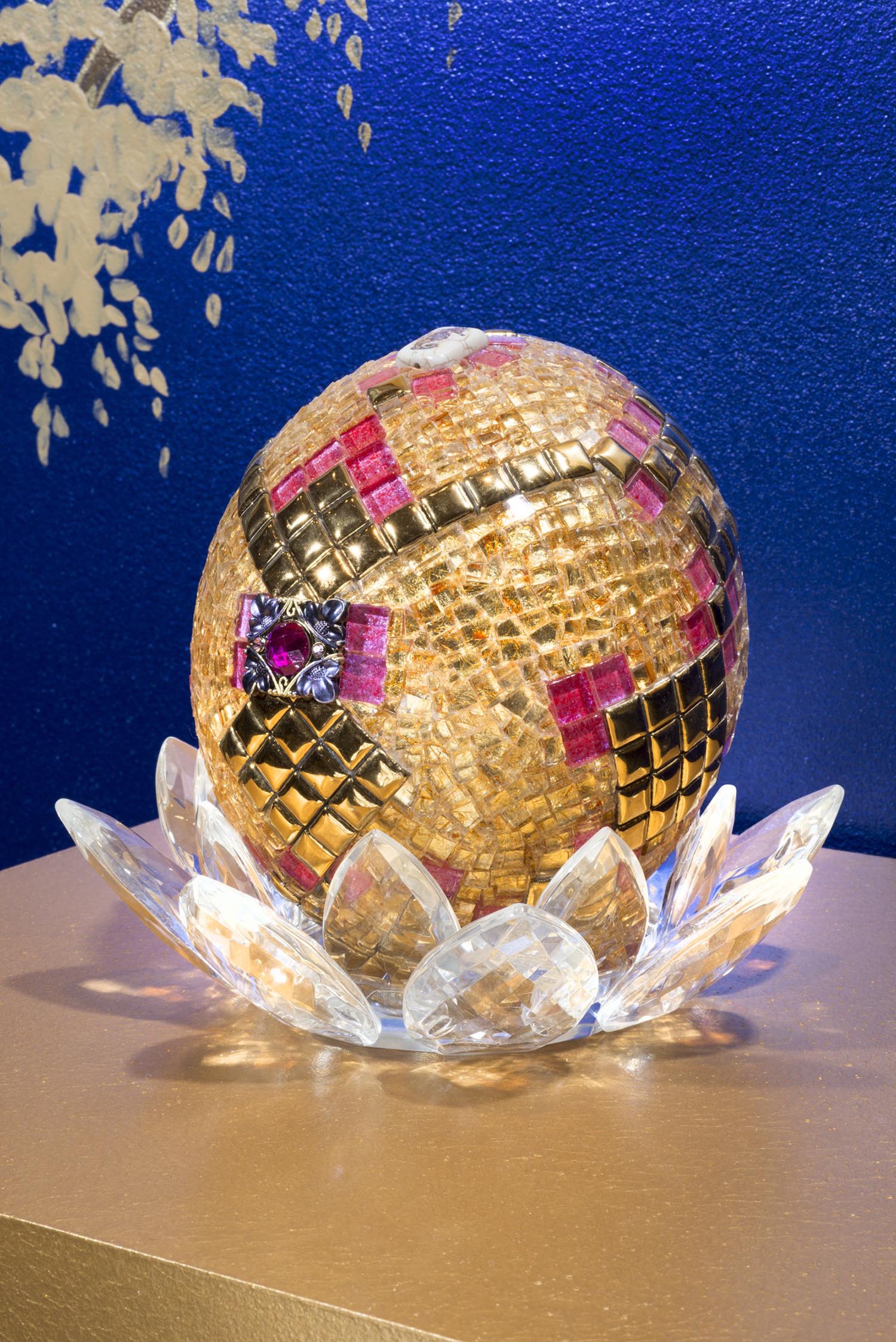
Egg #10
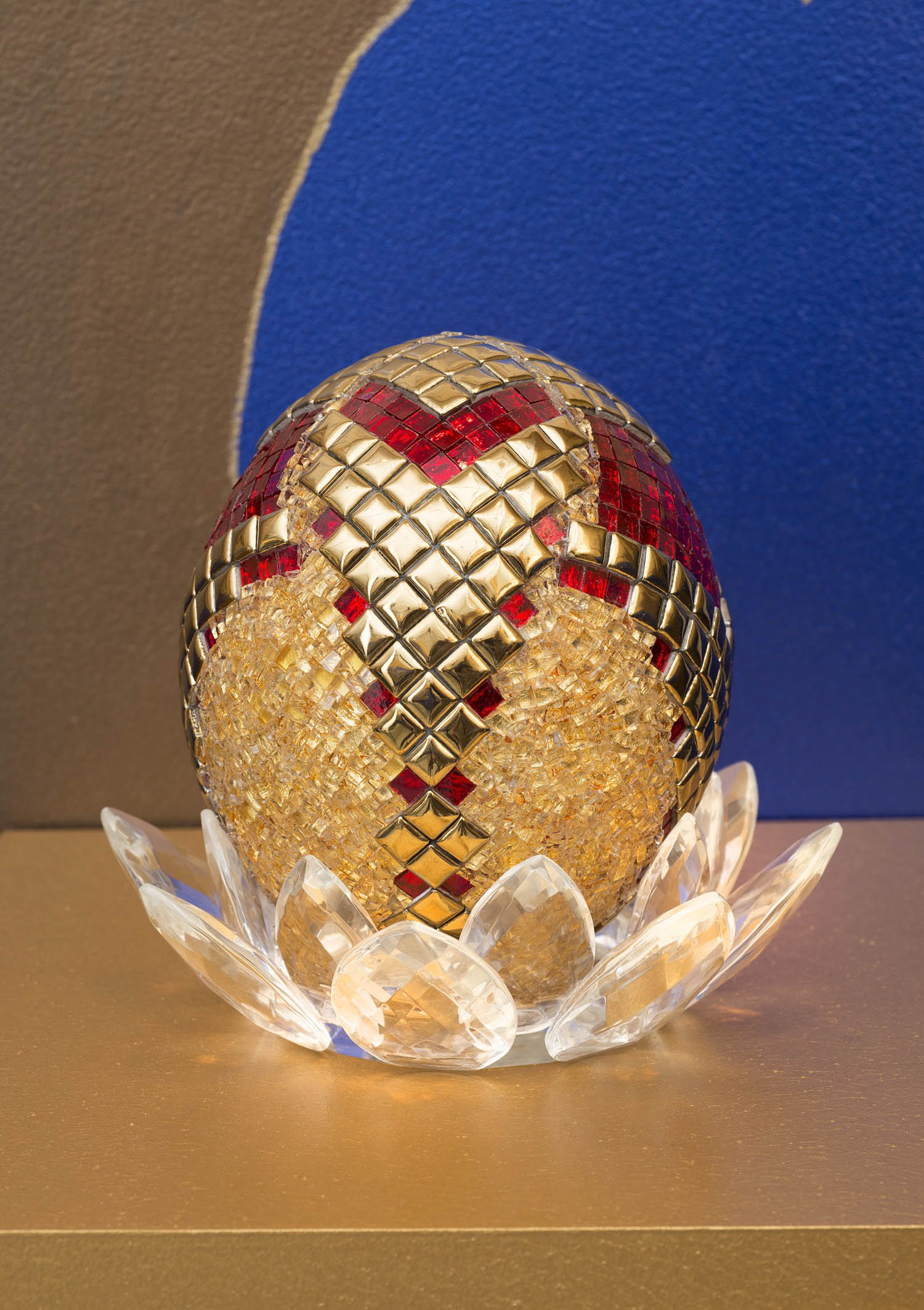
Egg #11
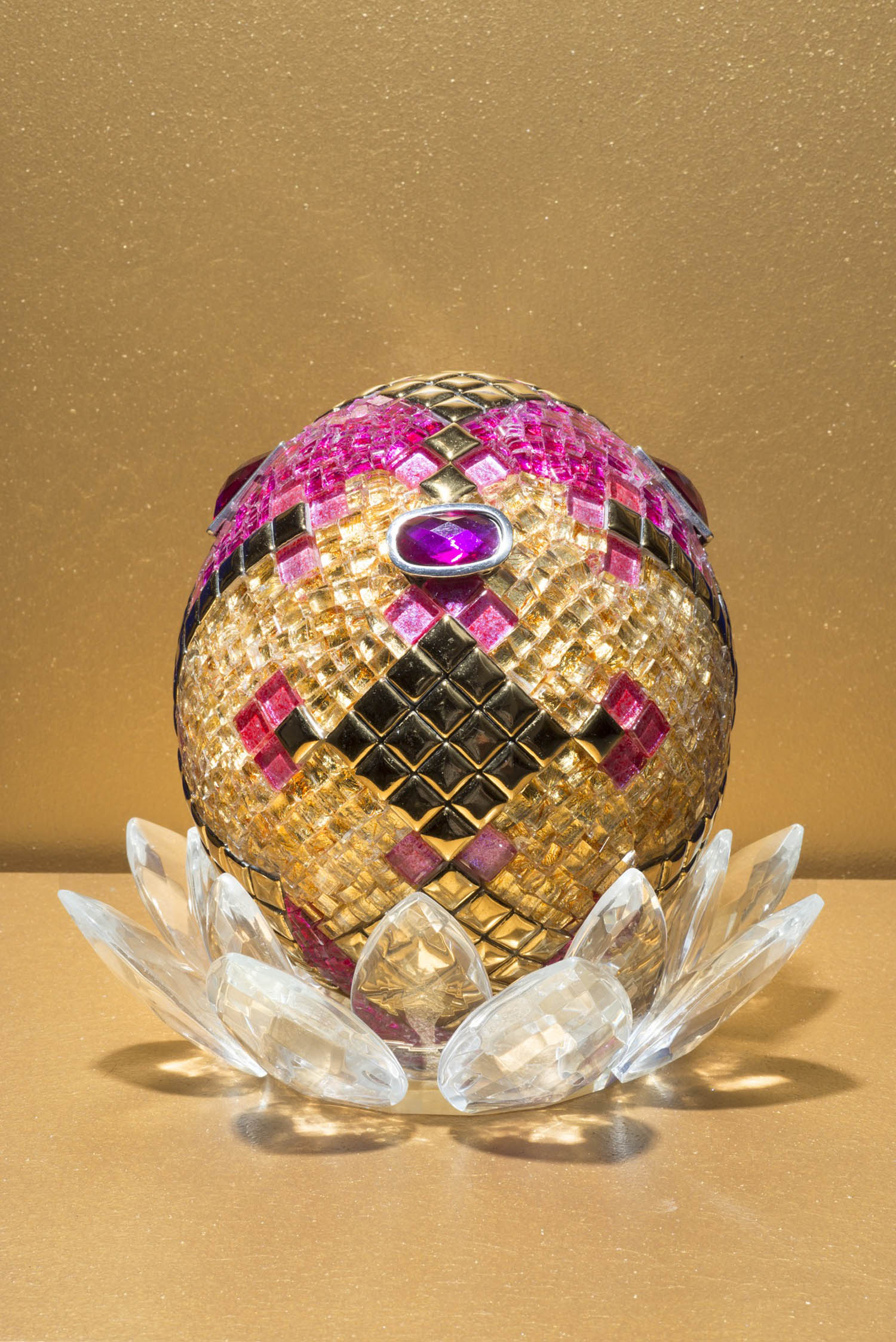
Egg #12
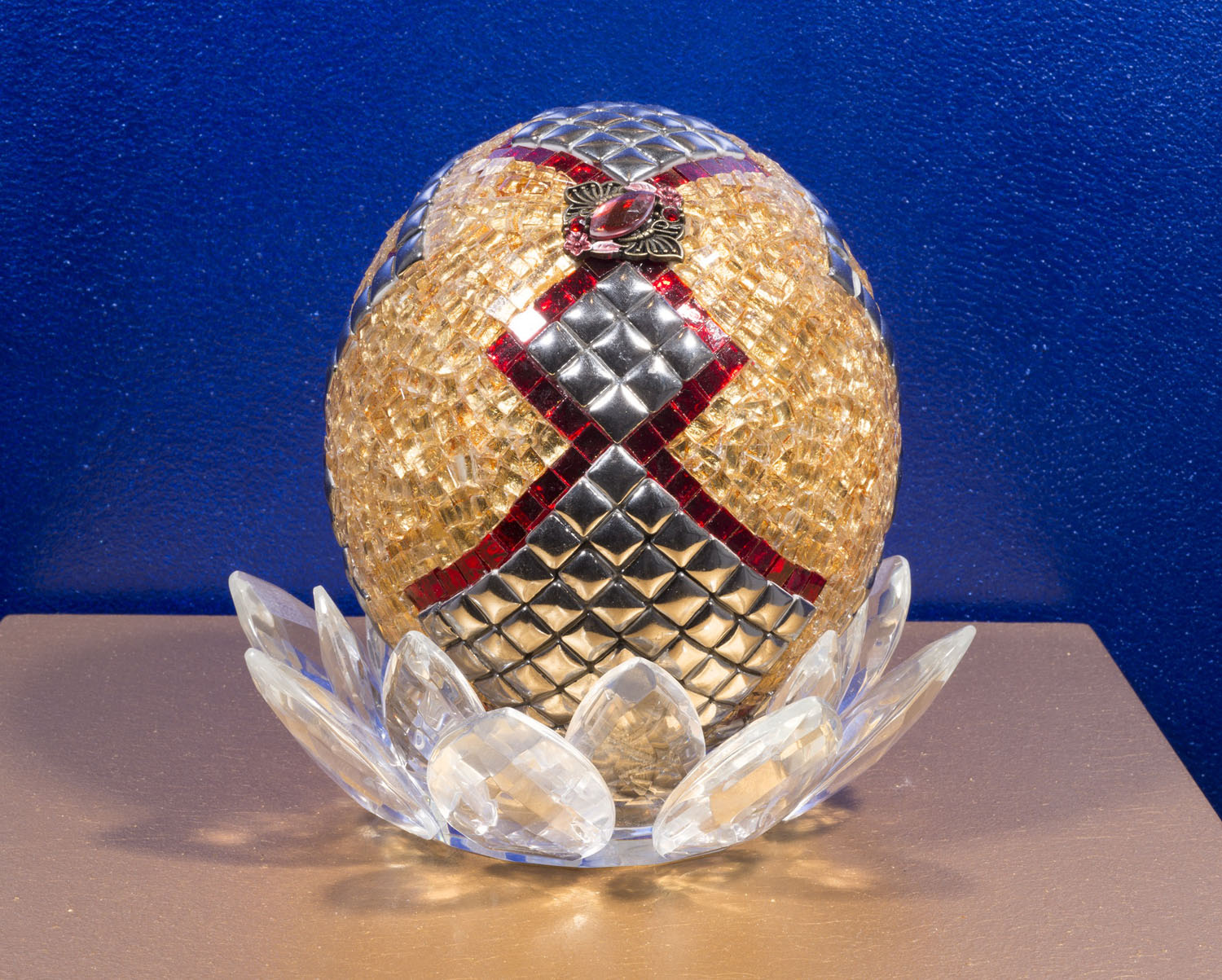
Egg #13
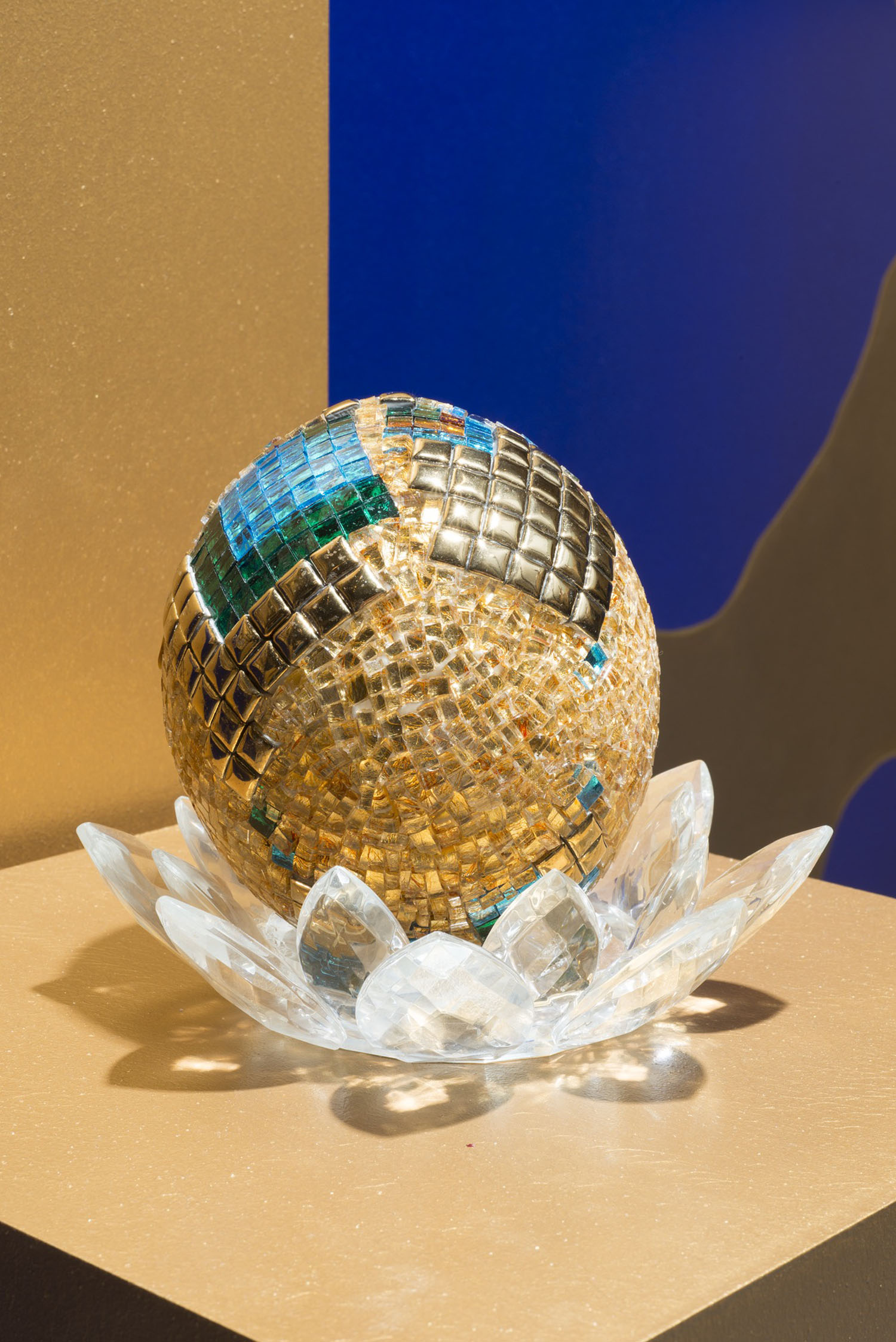
Egg #14
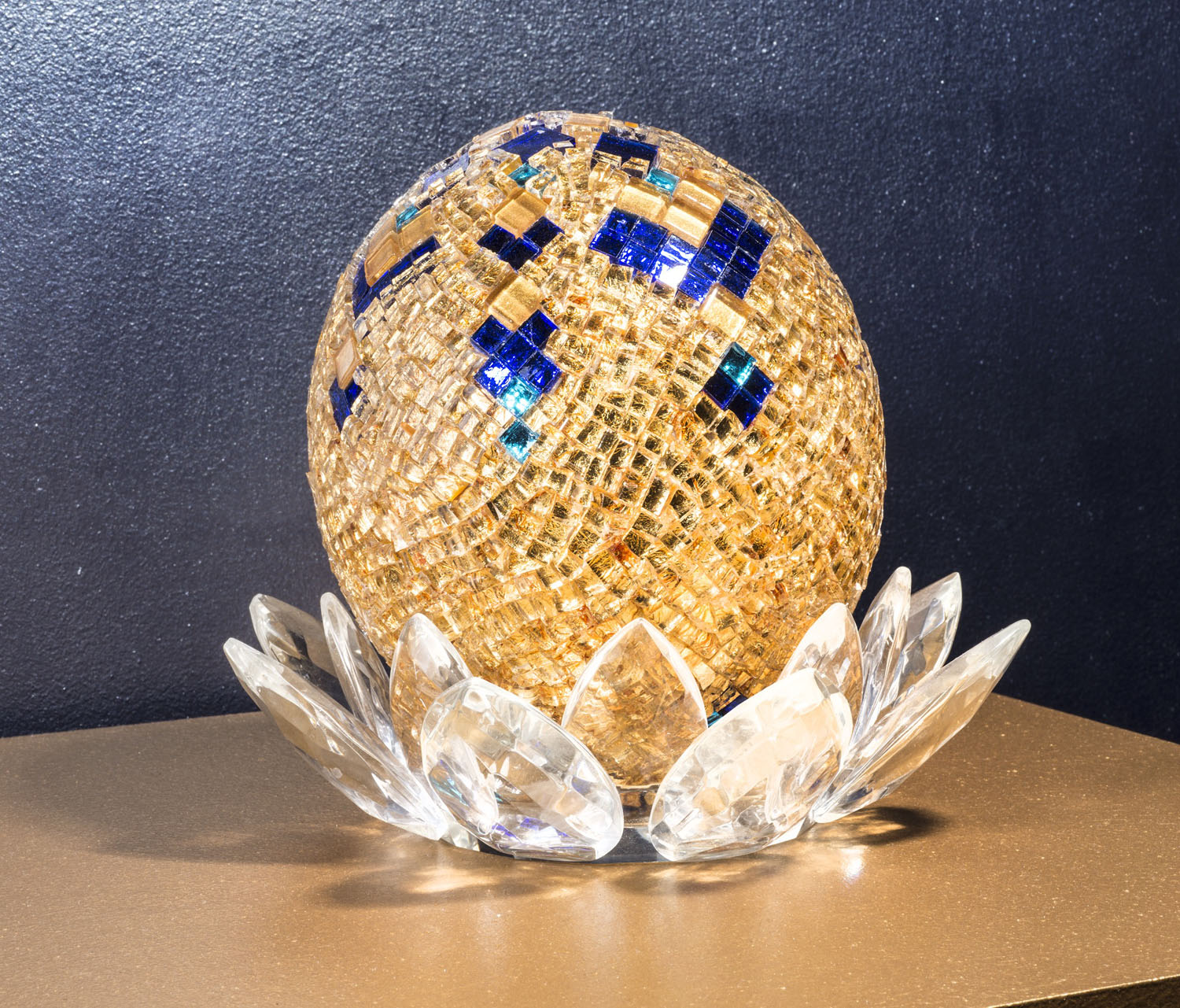
Egg #15
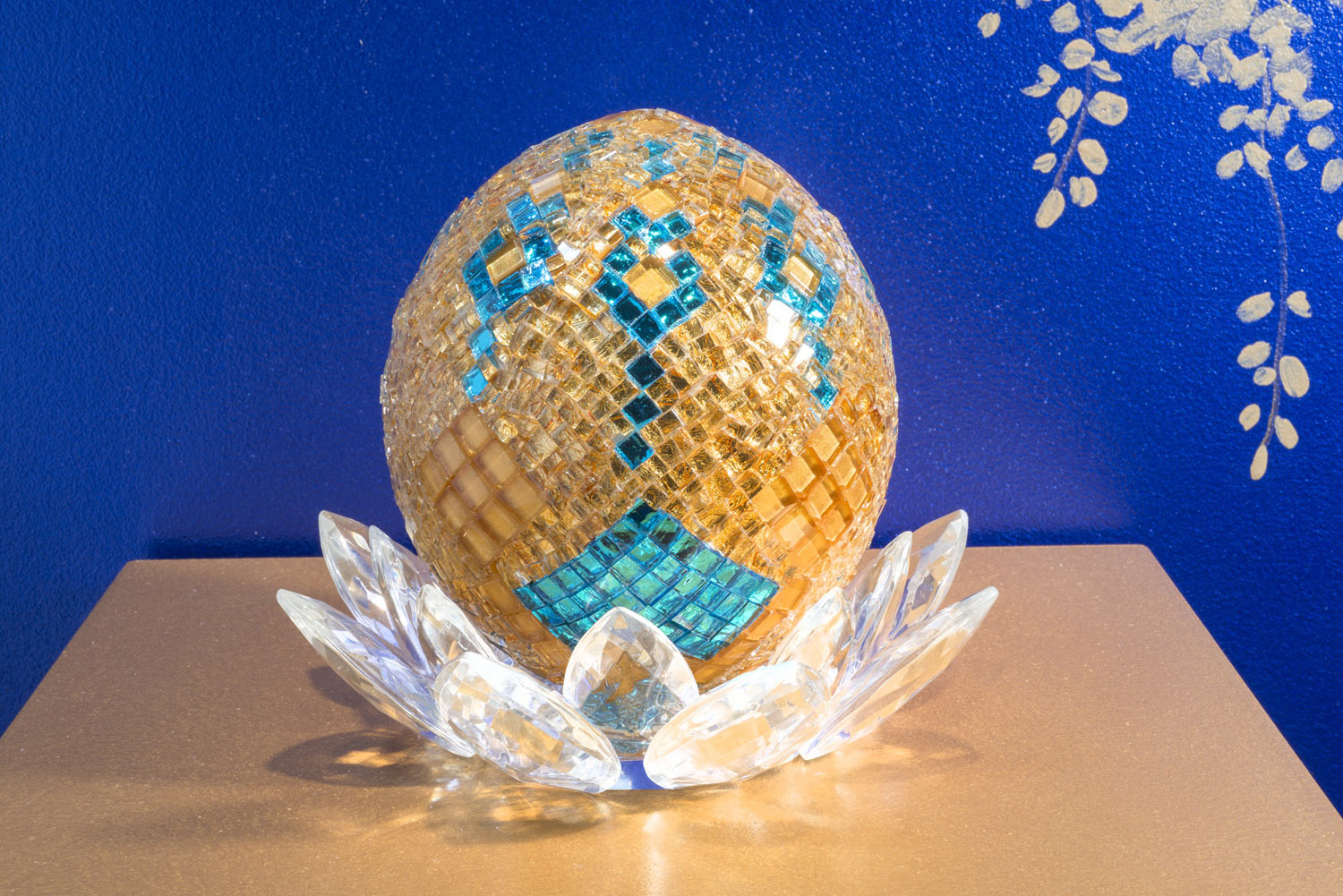
Egg #16
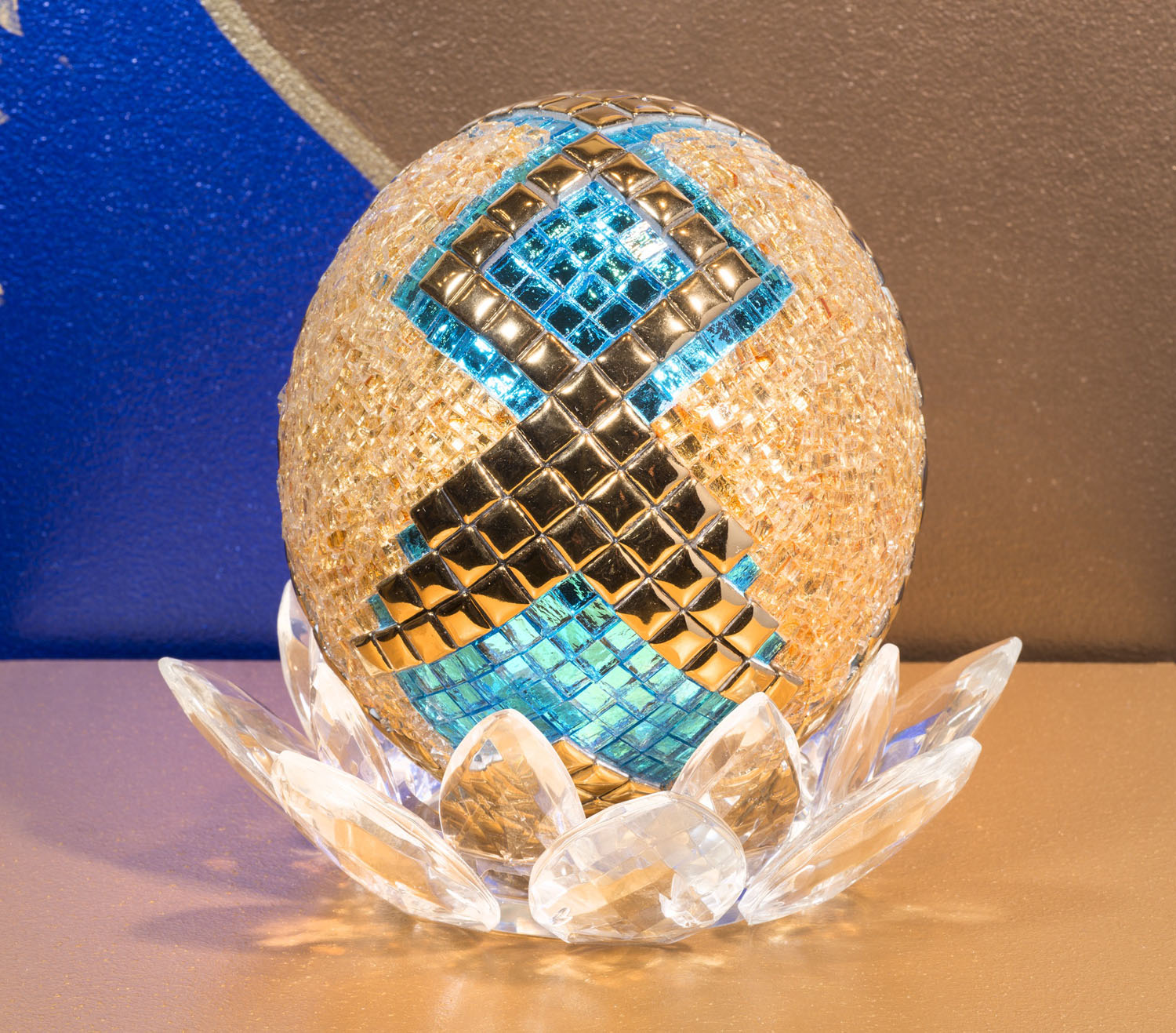
Egg #17